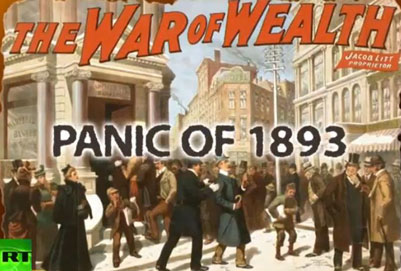Although best known as the founder of the Walker Art Center, T.B. Walker had an important role to play in the early development of St. Louis Park which endures today. His early experiment in urban/village planning in the late 1890s didn’t work out as he had hoped, but he proved to be well ahead of his time, and the areas he laid out can still be seen in present-day St. Louis Park. As this page will show, St. Louis Park was just one of Walker’s many endeavors. His efforts here set our history apart from our other suburban neighbors.
Thomas Barlow (T.B.) Walker was born in Xenia, Greene County, Ohio, on February 1, 1840.
T.B.’s father was Platt Bayless Walker (b. March 2, 1808, New Jersey). Platt was of pure English ancestry, and his family was one of the first settlers of New Jersey. His immediate family had moved from New Jersey to New York. Platt was a shoemaker by trade, but also described as a contractor, speculator, and “promoter of great enterprises.” Henry Hall wrote that “The senior Walker became a prosperous merchant in Xenia and promoted various enterprises in several States and lost several fortunes. He repeatedly resumed mercantile pursuit in Xenia, and in that line of activity was always successful.”
T.B.’s mother was Anstis Keziah Barlow Walker (b. October 4, 1814, Schenectady, New York). Her father, Thomas Barlow, was a judge in New York, and two brothers were also judges: Thomas in New York and Moses in Ohio. Anstis died on June 23, 1883, in Minneapolis.
Platt and Anstis moved from New York to Ohio in their early married life. T.B.’s siblings were:
- Platt Bayless Walker II (1832?-1906), founder of the Mississippi Valley Lumberman magazine
- Adelaide B. Walker (d. 1929)
- Helen M. Walker (1842-1876?)
In 1849 Platt invested all the family’s money in equipping an expedition of 46 men west during the California gold rush, bringing carloads of goods to sell. But when he got to Missouri, cholera broke out among the men. That he died of cholera in Missouri (Westport and Warrensburg are mentioned) and was buried there is about all there is in the way of fact. Since his partners sold his goods, never sharing the proceeds with the family or being heard from again, the particulars of Platt’s death may all be apocryphal. Stories include:
- He was one of the first victims.
- “Those who were stricken down were deserted in terror by every survivor except Mr. Walker, who nobly remained with several of the sick men until they died. Seeking finally to overtake the party on horseback, Mr. Walker died under a tree by the wayside near Westport, and was there buried.” (Hall)
Anstis married Xenia widower Oliver Barnes (circa 1800-1868) in 1854. Barnes had a son, Oliver W. Barnes.
T.B. was educated by his mother until age 16. [From age 9 to 16 he attended only short terms in public schools – Shutter, 1897] He helped the family finances by picking berries, working as a pinsetter, selling papers, etc. His first job was at age nine, cutting biscuits in a bakery.
The family moved to Berea, Ohio (thirteen miles west of Cleveland) in 1855. He clerked at a dry goods store and realized that an education was necessary, so he and his sister Helen enrolled at Baldwin University, a Methodist-affiliated institution. His need to earn money limited his attendance to one term per year. “Having a taste for mathematics, he pursued the study of engineering, astronomy, calculus and Newton’s ‘Principia.’” (Neill)
One of his endeavors was to purchase some woodland and hire fellow students to chop down the trees for cordwood and rails, making a profit for himself. He also “toiled with axe and maul in cutting fire wood and hard wood lumber for spokes, bowls, and blocks.” (Hall)
While attending school he was also a traveling salesman for Hon. Fletcher Hulet, manufacturer of Berea grindstones. He continued his studies on the road, and graduated in 1859 at the age of 19.
In 1859 he contracted to furnish cross ties and cord wood for the Terre Haute and St. Louis Railroad which ended in Paris, Illinois. He hired a crew of 40 to 80 men, built a camp, and worked for 18 months. He fulfilled the contract but the company failed and he only got a few hundred dollars for his troubles.
In the winter of 1860 he taught at a country school for two terms; his class of 60 students was said to include other teachers older than he.
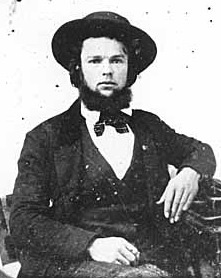
At the outbreak of the Civil War he had two carloads of grindstones to deliver, but a depression had ensued and his buyers refused delivery. He was able to dispose of one load, but had to travel to Chicago, Milwaukee, and Madison to try to find a buyer for the other. At Madison he applied for a position as an assistant professor of mathematics – according to one account he was turned down flat, and according to most others, by the time he was accepted he had decided on another career. Another account in an undated article from the Minneapolis Tribune says that the president of the college gave him an intricate geometry problem to solve. Although the entire student body has failed to solve it, Walker succeeded. He was offered the position, “but a life as a pedagogue did not offer the advantages that other branches might, and he decided to push on farther west.” This article also says that “Tom” was a surveyor, which he was not, and had a couple of other things wrong, so this account is dubious.
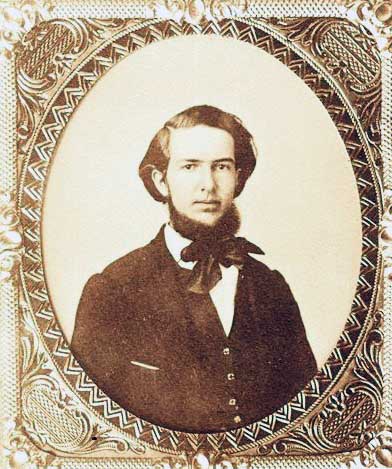
His actions at the outbreak of the Civil War are vaguely reported. He apparently attempted to join an artillery company near Cleveland, but the outfit was oversubscribed. Variously, he joined three different artillery companies, but none were called up. He was age 21-25 during the war, and it would seem that his services would have been useful at some point.
Still shopping his grindstones, he found himself at a hotel in McGregor’s Landing, Iowa, where he met Mr. J.M. Robinson, a salesman from the lumber firm of Ankeney, Robinson, and Pettit. Robinson spoke so glowingly of Minneapolis – “ten miles above St. Paul” – that within two hours Walker was on one of the “Diamond Joe” line of steamers to St. Paul and then over the only ten miles of rail in the state to St. Anthony. He left his grindstones in the care of James J. Hill, who was then just a lowly railroad clerk and walked over the bridge to Minneapolis.
Within an hour after arrival in Minneapolis in June 1862 he was hired by surveyor George B. Wright, who had a contract to survey Government land starting that August. Walker returned to Michigan to finally sell his grindstones to Mr. D.C. Jones and returned to Minneapolis on August 16, 1862.
Walker was entranced with the nascent Minneapolis, writing to future wife Harriet back in Ohio, “I have found the spot where we will make our home.”
SURVEYOR: 1862-1867
On August 20, 1862, Walker’s surveying party of 16 men started for the pine lands above Crow Wing, which was the last town on the Mississippi above Minneapolis. While traveling from St. Cloud to Fort Ripley they were confronted by Sioux Indians, who were in revolt; Walker stated that they feared that the Sioux were moving up north to get the Chippewas to join them. The party made it to Fort Ripley where they helped the soldiers there defend the fort. The surveying trip was abandoned and they made it back to Minneapolis, where Walker rented space from lawyer L.M. Stewart to engage in general studies.
Walker, writing in 1914:
I remained [in Minneapolis] until winter [1862] and the, upon my solicitation, Mr. Geo. B. Wright, the government surveyor, took a small party of us to survey some of the townships. As all the work was located in the timber, the corners were to be established by means of bearing trees, and the work could be done satisfactorily in winter; whereas, on the prairies, where mounds were to be built for corners, it was utterly inpracticable to do the work. In getting Mr. Wright to go into the woods, I had arranged with Mr. W.S. Chapman to secure Indian land scrip with which to locate pine timber which I would hunt up in the surveying of the government land. This Sioux scrip was locatable on unsurveyed or surveyed lands before they were offered for general entry, and had been issued to the Sioux half-breeds, pursuant to the treaties of 1851.
We started the 12th of December with ox teams, which was the usual means of transportation on these surveying trips, and landed at Crow Wing about the 20th, when the thermometer was 24 degrees below zero. We surveyed about two months and the the ugly attitude of the Chippewa Indians made it seem prudent for us to leave and we came out, having complete the surveys of two townships and some work in the other. (Holcombe and Bingham)
Walker had no experience as a surveyor and started as a chainman, clearing underbrush, but soon switched places with his employer and became a deputy surveyor.
During the summer of 1863 he worked on the survey of the St. Paul and Pacific Railroad.
In the fall of 1863 he returned to Ohio to get married, and remained there through the winter, returning to Minneapolis with his bride in the spring of 1864. There they “rented a little house up on the East Side [St. Anthony Falls] for $9.00 a month.”
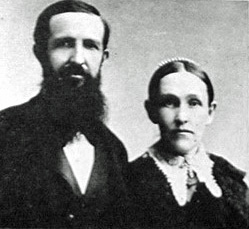
In the summer of 1864 he worked on the survey of the St. Paul and Duluth Railroad.
In 1865-66 he was a government surveyor. “This employment brought him among the pine forests of the northern part of the State, and the observations then made formed a better wage than the surveyor’s pay. His eye ranging from the tall pines acres across the treeless prairies of the West saw vision of vast possibilities of business and fortune in transforming the rugged trees into houses and improvements, into villages and cities, to arise on the broad stretches of prairie.” (History of Hennepin County?xxx)
LUMBERMAN
His time in the woods convinced him that money could be made in the lumber business. Land was available for $1.25/acre, and all he had to do was find financial backers.
From 1867 to 1869 he partnered with Dr. Levi Butler and Howard W. Mills to form Butler, Mills & Walker. The company originally was formed to purchase pine lands and sell stumpage, but also became involved in the manufacture of lumber.
In 1869 Mills retired to California due to ill health and the firm became Butler & Walker.
There was a disastrous fire on the east side of the Mississippi River, and two of the firm’s mills were lost. This was “a serious and embarrassing loss.”
There is conflicting information about where the Walkers lived before 1874.
- One source says that in 1869 they lived at First Ave. and Third Street So.
- Another source says that in 1870 he built his first house at Ninth Street and Marquette Avenue.
- Another source says that in 1869 he built a house at First Ave. and Ninth Street So.
Unfortunately the Census does not provide street addresses that far back.
Walker apparently began his acquisition of Minnesota timberlands around 1870. Title was obtained in various ways, including the use of Chippewa scrip and soldiers scrip; land patents; and applications to enter public lands under the Treaty of February 22, 1855, with the Chippewa of the Mississippi (10 Stat. 1165). “The purchase of Chippewa Half-Breed Scrip was supposedly non-transferable. A federal investigation of these purchases exonerated Walker and other purchasers from blame on the specific point designated by Congress, but the report stated that the ‘testimony reveals a reckless carelessness in making large purchases, and we think, on the part of many of the claimants, guilty participation in an ingenious device to evade the orders of the Government.’” (Report of the Jones Commission, Sen. Ex. Doc. 33, 43 Cong., 1 Sess., p. 12, as cited in a biographical essay of T.B. Walker by Lester Burrell Shippee, 2004.)
Walker also purchased all of the timber owned by the estate of Levi Butler. Francis M. Campbell apparently was instrumental in carrying out much of the field work necessary to Walker’s land acquisition program, such as getting deeds signed and acquiring scrip certificates.
The next partnership was L. Butler & Co, with Walker, Dr. Levi Butler, O.C. Merriman, James W. Lane, and Leon Lane. They constructed large saw mills on east side at the new dam. The partnership was dissolved in 1871.
From 1871 to 1872 the firm was again Butler & Walker.
Somehow he knew to pull his money out of the partnership and pay his debts before the Panic of 1873. Those who didn’t suffered severe financial losses. Despite the country’s financial woes, Walker had enough money to build his mansion at 803 Hennepin Ave. in downtown Minneapolis. He brought his mother to live with his family, and she remained there until her death on May 23, 1883. The house was demolished to make way for the State Theatre/Walker Building complex, which was built in 1920. Remarkably, not only did Walker not put a fence around his property, he placed benches on the grounds, encouraging people to rest. Children could be seen playing ball on the grass, and soon people would be ringing the doorbell to see Walker’s art collection (see below).
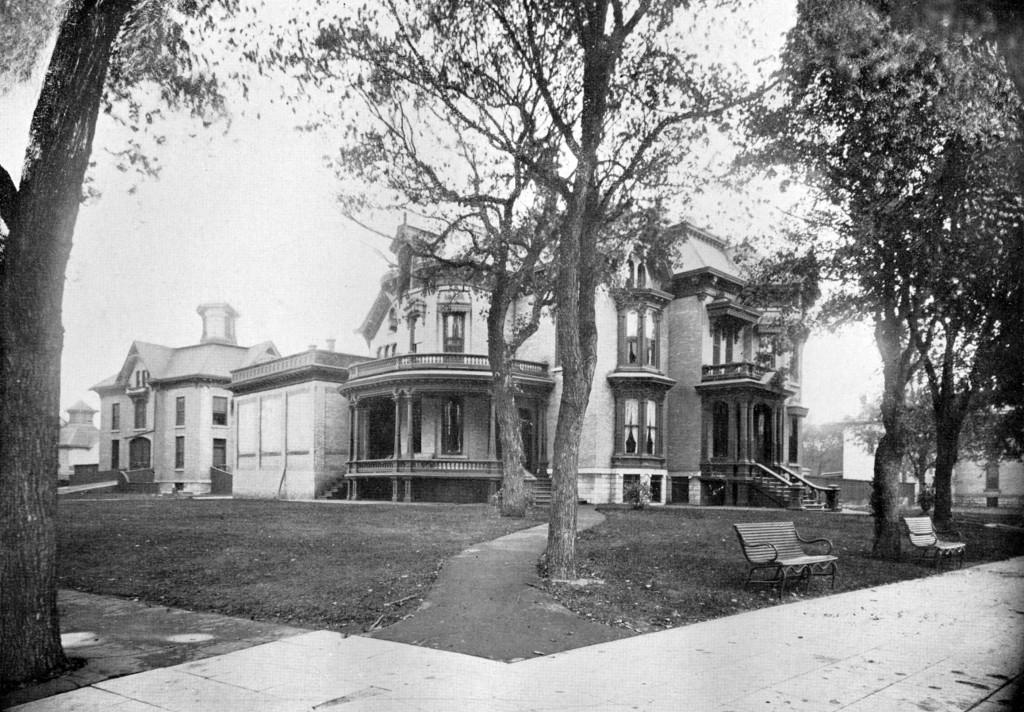
By 1876 Walker had become the largest owner of pine lands on the upper Mississippi, owning land at the headwaters of the Red Lake and Clearwater Rivers.
In 1877 he formed Camp & Walker with Major George A. Camp, who had been surveyor-general of logs and lumber in the district. They bought the Pacific Mill at First Ave. No. in Minneapolis from Joseph Dean & Co. That mill burned in the fall of 1880. It was rebuilt, operated until 1887, and then torn down for a railroad. (Its site was excavated by MHS archaeologists in 1986.) The lumber was sold to Bovey-DeLaittre Lumber Co., who moved it up river to Shingle Creek, just north of city limits and rebuilt it. In 1887 the partnership of Camp and Walker was amicably dissolved.
“During these years he was also interested in lands and logs with H.T. Welles, Franklin Steele, Major Camp, Herrick Bros., George Cleveland and others.” (Neill)
RED RIVER LUMBER COMPANY: 1883-1956
The Red River Lumber Company (RRLC), the Walker interests’ flagship business, was one of the largest forest products corporations in the nation, controlling huge acreages in north-central Minnesota and later in northeastern California. It was organized in 1883 and incorporated in 1884. Incorporators included T. B. Walker, Simcoe Chapman, Andrew B. Robbins, Watson S. Taylor, and Edwin C. Whitney. Lumber mills were constructed at Crookston, Minnesota, in 1883, and at Grand Forks, Dakota Territory, in 1885. The Grand Forks mill was completely destroyed by fire on August 16, 1888; it was not rebuilt. The mill at Crookston was sold in 1897 to the Thomas H. Shevlin interests, who, as the Crookston Lumber Company, continued to operate the plant for several more years.
In 1891 RRLC was the largest owner of pine timbered lands in Minnesota, second largest in the Northwest, owning 100 million feet. Around 1900, Jens J. Opsahl, a Bemidji, Minnesota realtor, began selling cutover Minnesota land for the Walkers, continuing to do so for several decades thereafter.
The Red River Lumber Company was also the home of the legendary Paul Bunyan. Stories of the mythical lumber jack were adapted and expanded from local loggers’ tales by Red River’s publicist William B. Laughead, who produced some thirteen editions of various legends over a 30 year period and invented the supplementary characters of Babe the Blue Ox, Johnny Inkslinger, and Shot Gunderson. Paul Bunyan became a nationally known advertising character, identifying Red River Lumber Company products wherever they were marketed. A 35-page pamphlet produced in 1922 is available online from the Wisconsin Historical Society.
Besides the mills at Crookston, Grand Forks, Akeley, and Westwood, the RRLC operated several smaller mills in northern Minnesota and in northeastern California. Smaller California mills included operations at Bella Vista (Shasta County) and at Susanville. At various times there were sales offices at Minneapolis, San Francisco, Oakland, Los Angeles, Chicago, and New York City. Distributing yards were located at Minneapolis, Chicago, Los Angeles, and Reno, Nevada. Although the RRLC was primarily a lumber manufacturer and wholesaler, there were some retail sales in the Twin Cities through the Foote Lumber and Coal Company, a RRLC subsidiary that operated retail yards in both Minneapolis and St. Paul.
T. B.’s son Clinton left the company in 1913, although he rejoined it in the 1930s. T. B. died on July 28, 1928, and Gilbert died five months later, on December 28, 1928. This left the active management of RRLC affairs in the hands of Willis (San Francisco), who succeeded his father as president of the firm; Fletcher (Westwood); and Archie (Minneapolis).
By the early 1930s the RRLC found itself in dire financial straits; in particular, it was unable to redeem nearly $2 million in bonds which it had earlier sold and which were then coming due. Barlow Realty Company was organized in December 1932, for the purpose of acquiring and managing all of the real estate owned by the RRLC in the city of Minneapolis. This was probably done at the insistence of the family’s Minneapolis bankers. The family was able to thwart a 1933 effort led by Northwestern National Bank of Minneapolis president Edward W. Decker to install his son-in-law, David J. Winton, as manager or president of the RRLC. Instead, the Walkers managed to get Archie installed as its president, replacing Willis, whose ouster was apparently demanded by the Minneapolis banker/creditors due to his “reckless” behavior. Later that same year, the company had to ask its bondholders to grant time extensions on bonds then coming due.
Willis Walker died in 1943, Clinton Walker in 1944. Perhaps in part because of these occurrences, the decision was taken to liquidate the RRLC.
Unsold cutover lands in Minnesota were deeded to the Barlow Realty Company in the 1940s. California timber lands standing in the company’s name were distributed to its stockholders (family members and a few key employees) over the years, beginning in 1941. Shasta Forests Company (SHAFCO), a Walker family cooperative corporation, was created to manage the lands on behalf of the stockholders and to carry out any liquidation of the stockholders’ or their agents’ assets, particularly timber cutting. Liquidation of the RRLC continued into the 1950s.
Presidents of the RRLC were:
- B. Walker (1884?-1928)
- Willis J. Walker (1928?-1933)
- Archie D. Walker, Sr. (1933-circa 1956)
AKELEY: 1886-1912
T. B. Walker and Healy Cady Akeley (1836-1912), a Michigan lawyer and lumberman, first met in 1886 at Minneapolis when T. B. dissuaded Akeley from building a sawmill on the Mississippi River at St. Cloud, Minnesota. Instead, they began an informal business partnership to cut and sell logs. In March 1887, the men contracted to buy timber lands in northern Minnesota on joint account, Akeley furnishing the capital and Walker paying 5 percent interest on the money advanced in his behalf. In August 1887, Walker and Akeley entered into a new contract under which Akeley bought a half interest in a long list of Walker and RRLC lands.
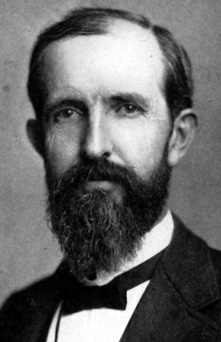
In 1892 the men drew up a formal partnership contract. Walker managed and administered partnership affairs out of the RRLC office at Minneapolis, apparently with the complete confidence of Akeley, who meanwhile occupied himself with his H. C. Akeley and Itasca lumber companies. Walker & Akeley partnership lands evidently averaged about 200,000 acres; in time T. B. came to own a 45/64 interest in these lands, Akeley a 19/64 interest. Akeley eventually retired from active business and moved to California.
General settlement began about 1895, with a general store, a brick industry, and hotels; the railroad came in 1899. Walker and Akeley built logging railroads across Itasca County to the Red River to get the company’s logs and lumber out. (MNOPEDIA)
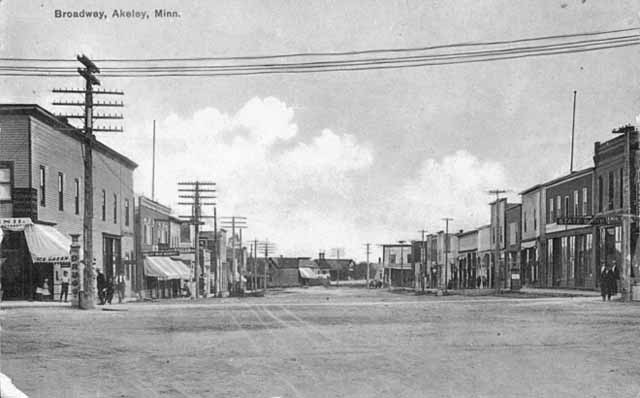
Walker & Akeley was the largest timber firm in the state and the largest sawmill in the state was built in the town of Akeley in 1902. The company bought its timber supplies from the Minnesota Logging Company, hauling the logs after they were cut via the principal logging railway of northern Minnesota from Leech Lake to Brainerd. Over 60 to 100 million feet of lumber were shipped every year. (Minneapolis Daily Times, July 30, 1903: “Life of T.B. Walker” by Hon. James Gray)

Frank Brean’s account of the early days of Akeley as told to his daughter Frances Lamb:
The population of Akeley in November of 1902 was about 2,000 and swelled to about 3,500 in 1907 and 1908. Lumber-jacks were coming and going on every freight or passenger train. The big Red River sawmill and planing mill ran night and day, winter and summer. In the winter they operated by a large hot pond which was built in the lake and was kept hot by being piped to the burner by five inch pipes. The burner burned sawdust and some scrap slabs. Every spring when the ice would go out of 11th Crow Wing Lake the entire lake would be covered with logs. There was no room for any boats until later in the summer. (Akeley Historical Society)
In 1903 the town of Akeley, which was started by the mill, had 1,400 residents. The owners of the mill stipulated in the deed of every piece of land sold that it could not be used to dispense liquor. “The result is that no town or city organization has been necessary, and there is not a more orderly or contented community to be found in the state.” The mill ran day and night. (“T.B. Walker – Captain of Industry,” Minneapolis Journal, November 29, 1903)
A visit to Akeley in 2015 resulted in meeting 84-year-old Jim Moore. Jim said that his great grandfather, Milton Moore, sawed lumber to build the sawmill in 1898. He said that the population of Akeley peaked at 5,000, and the town had 11 hotels. When the operation shut down and Walker moved on to create Westwood in California, Moore said that about half of the workers from Akeley went with him. As for the rows of storefronts on Broadway, legend has it that the owner of a jewelry store set his place on fire for the insurance, and many of the original buildings were burned to the ground. There are a few original buildings left, however.
H.C. Akeley died at Minneapolis in 1912 while on a visit there. He was survived by his widow Clara and daughter Florence. Walker spent the next three years trying to settle partnership affairs with Florence, the administrator of her father’s estate. Failing to get a settlement, he sued for an accounting in October 1915, in the district court of Beltrami County, Minnesota. Walker claimed that there was money due him from the partnership, asked to have the amount determined, and asked the court to order a sale of partnership lands to satisfy the amount that should be found due. Florence asserted similar claims against Walker. After almost ten years, Walker prevailed. The assets remaining at the time judgment was entered consisted of unsold cutover timber lands in Hubbard, Beltrami, and adjacent counties, and the unpaid balances on partnership lands sold.
The city of Akeley was incorporated on December 30, 1916. Dairying replaced the lumber industry by the early 1900s, and the Red River Lumber Company moved its mill to California in 1917.
NOTE: Although there is a town of Walker, Minnesota, its connection to T.B. Walker is tenuous. According to Wikipedia, following the construction of the railroad to the area, Patrick McGarry founded the town in 1896. He called it Walker in the hopes of getting T.B. Walker to build a sawmill there, but Mrs. Walker objected to the bars in brothels in the rough frontier town, and Walker chose another site which would become Akeley. The town of Walker did have four other logging companies at its peak.
MINNEAPOLIS LAND & INVESTMENT CO./ST. LOUIS PARK: 1890-1894
Walker turned his attention to building up the industrial base in the area, first focusing on St. Paul. Said Walker, “St. Paul had the wholesale trade, the retail trade, the railroads and the banks. We tried five years to arrange an amicable interest in building up the industries of both cities.” They had a false start when the Minneapolis men tried to work with their counterparts in St. Paul to lure a factory from the east to merge with a Minneapolis plant, but were double crossed when St. Paul ended up with both the eastern and the Minneapolis factories. The Minneapolis contingent also put considerable funds into the Midway area, only to have it annexed by now arch rival St. Paul.
Compounding the fierce rivalry, which was egged on by the editors of the St. Paul Pioneer Press and the Minneapolis Tribune, was the debacle of the 1890 Census. It was a nasty affair, with the two cities each trying show that they had more residents. People were counted in saloons, museums, depots, factories, and other bogus places of residence. An investigation showed that St. Paul had over counted by 9,000, Minneapolis by 18,000, with the result that Minneapolis enumerators were actually arrested, convicted of fraud, and sentenced to prison. (Minneapolis Tribune, September 22, 1890) Minneapolis also lost the State Fair to St. Paul during this period.
To remedy these slights, Walker and other capitalists sought to bring manufacturing to Minneapolis. To that end, the Businessman’s Union was formed on March 31, 1890. Walker was its President for all 15 years of its existence. The group had 300 members, including Thomas Lowry and Andrew Robbins, the founder of Robbinsdale. Their task was to raise capital and attract industry to the area.
In addition, he wanted control of that manufacturing. He had twice visited Pullman, Illinois, where George Pullman’s factories made railroad cars. Pullman owned the factories, housing, schools, stores, and had total control of the city. Walker liked the idea but had no factories of his own, so his goal was to identify a location and then attract factories.
Walker set his sights on St. Louis Park starting in at least June of 1890; Lowry had advocated for Columbia Heights, and Robbins for the area that would become Robbinsdale. South Minneapolis was also under consideration. The Park was ultimately chosen because of its location on the western border of Minneapolis, with no possibility of being grabbed by St. Paul. Only a specific portion of the village was targeted: Minnetonka Road on the north and Excelsior Road on the south. There is no record of the reaction of Park residents to the Syndicate’s plan, but the owners of the land that had only paid $1.25/acre and probably made a tidy profit by selling. Most of the land was not being used for anything but truck farming and grazing dairy cows, and it is doubtful that many (if any) homes were displaced.
A smaller group called the Minneapolis Land and Investment Company (a/k/a the Syndicate) was incorporated on July 16/September 27, 1890. Incorporators were “gentlemen whose energy and influence have been felt in the growth of Minneapolis.” Members included:
- B. Walker – President
- Calvin G. Goodrich – Treasurer
- LF Menage – real estate promoter – First Vice President. (After the Panic of 1893 Menage’s Northwestern Guaranty Loan Company (Minneapolis) failed and he fled to South America.)
- Thomas Lowry – founder of the streetcar system
- RC Haywood
- Henry F. Brown – St. Louis Park farmer – Second Vice President
- George H. Christian
- GG Boshart
- AM Allen – Walker’s Personal Secretary – Secretary
A few days earlier, on September 22, 1890, the Minneapolis Tribune reported:
What is by long odds and in many respects the largest and most important real estate transaction ever carried out my Minnapolitans and for the city’s direct benefit, has lately been consummated, and it is of such a nature that the local real estate and building operating will have an impetus which nothing short of a disastrous financial panic could check. [Italics added] For almost six months past a number of prominent capitalist have been busily engaged securing options on and title to properties in St. Louis Park with the result that the conclusion of the negotiations finds no less than 2,300 acres of choice sites controlled and owned by the syndicate, on which manufacturing plants, dwellings, stores and public buildings will be erected, forming altogether such a combination as would suggest to the most enthusiastic capitalist a vision of feudal days.
On the same day, September 22, the Minneapolis Journal published an article entitled “A New Pullman.” It stated that Menage had contemplated a similar enterprise just north of the city (10th Ave. North), but he abandoned it to participate in the St. Louis Park venture. The article overstated the amount of land purchased by about 300 acres, and said that another 4,000 acres were under contract for purchase. It also said that $1,500,000 had been spent by the capitalists for the purchase of the land.
[The] erection of homes will be a feature of the enterprise. The houses will be modeled on the most approved plans, and supplied with all of the improvements which are now to be found in the home of the millionaire, so that the humble artisan will be deprived of none of the comforts which now surround his employer. Business blocks will be erected, for the workman must have stores to supply him with the necessaries and comforts of life. Places of amusement will not be neglected either, but why particularize? Nothing that is found in any well-regulated city will be wanting from this municipality of workingmen.
On September 24, 1890, the Tribune backed up its claims of the Syndicate’s purchases by listing in detail buyers, sellers, legal descriptions of property sold, and amounts paid, which added up to $1,636,545. Sellers included Joseph Hamilton, Calvin Goodrich, and the St. Louis Park Land and Improvement Co. Most sales were made to Walker, A.M. Allen, or Joseph B. Allen. The article also provided comments on the plan by prominent Minneapolis citizens.
The next day, September 25, the Tribune reported that work was well underway for the first factory, that of the Van Brunt & Davis (soon to be renamed Monitor Manufacturing) Co. Two other companies were mentioned as coming to the area: the Corbin Manufacturing Co. and the Price-Condit Fence Company. On the 29th the Tribune reported that 400 men were on site, grading and building as quickly as possible before winter comes.
On October 18 the Tribune reported that the three factories under construction faced the St. Louis Road and were 300 yards apart. The article also stated that more land was under contract, with a goal of controlling 3,000 acres. In the end, it came to about 2,000 acres total. 100 acres were even purchased to the east, outside Park Village limits, from O.K. Earle, although it may have been part of the land that was contracted but never purchased.
A mild fall and early winter allowed extended time for grading of about 12 miles of streets, “exclusive of the extension of Lake Street Boulevard, which will be placed in first-class shape under an agreement with the projections of the scheme for boulevarding that thoroughfare to Minnetonka…” (Tribune, December 22, 1890)
Next came platting the Syndicate’s land, which they had finished purchasing. The surveyor appeared before the County Commissioners and requested that the plat maps be 40 x 50 inches instead of the usual 20 x 30 inches, due to the size of the plat – “this was allowed” reported the Tribune on December 23.
REARRANGEMENT OF ST. LOUIS PARK
Since there was already an early plat called St. Louis Park, the Syndicate’s plat was called “Rearrangement of St. Louis Park,” a name it holds today. James E. Egan was the surveyor. Two introductory pages give the legal descriptions of the land replatted. The plat deeds streets, roads, parks, etc. to the Village, but retained the right to install water or gas mains or conduits; telegraph and telephone poles; and horse car, cable, electric, or other forms of public transportation.
In a very early exercise in urban planning, the plat was organized into three distinct areas:
The Industrial Circle was a tilted oblong circled by railroad tracks that connected to the Minneapolis and St. Louis; the Chicago, St. Paul, Minneapolis, and Omaha; and the Chicago, Milwaukee, and St. Paul Railroad lines. In 1891 there was also a connection to the Great Northern. The circle was divided into pie-shaped sectors where the Syndicate would build factories to the specifications of companies. The Industrial Circle remains today; the top of the circle is the curve in Walker Street. The intersection of Highway 7 and Louisiana is at the center of the site, with South Oak Pond a reminder that it was indeed “in the marsh.” At the time the plat was recorded, six factories were in operation:
- Monitor Drill – 300 employees
- Thompson Wagon Co. – 100 employees
- Minneapolis Malleable Iron Co. – 100 employees
- Minneapolis Jarless Spring Carriage Co. – 50 employees
- Shaft-Pierce Shoe Co. – 50 employees
To come were:
- Esterly Harvester Co. – 800 to 1,000 employees expected – ground broken July 1892
- B. Harker & Co. Hollow Ironware & Specialties – 100 employees expected
Worker housing was built in an area that is now known as South Oak Hill, southwest of the Industrial Circle. Residential lots were as small as 22 feet; supposedly builders would build houses on every other lot and leave room for gardens, although a map from 1898 seems to show houses built right next to each other. Walker built about 100 so-called Walker Houses from 1890 to 1898. Renting for $9-$14/month, the houses were identical, narrow, two-story affairs. They were heated by parlor stoves, and had no indoor plumbing. In the 1930s the E.H. Shursen Agency sold the last of them. They were built so close together on Walker’s 25 ft. lots than when a fire took one house, an entire block could be destroyed. There are about 50 of them left, a few in near-original condition, and some modernized so thoroughly that they are unrecognizable as Walker Houses. Although the greatest concentration is on Edgewood and North Streets, many have been moved from their original locations.
Downtown was a one-block commercial district on Broadway (renamed Walker Street in 1933).
An ad in the Tribune dated September 22, 1891, announced:
Notice to Contractors: Several large brick buildings are to be erected at St. Louis Park. Plans and specifications can be seen at our offices, 7 and 10 Lumber Exchange. Minneapolis Land & Investment Co.
Could this be the start of construction of the Walker and Hamilton buildings? An article in the Tribune dated July 3, 1892, indicated that one building had been started and the foundation of the other had been put in, but it didn’t say which was which.
The red brick, two-story Hamilton Building was built by Joseph Hamilton. The first floor had four sections, and businesses moved in and out frequently. In the early 1900s Hamilton’s son Charlie bought out Mr. Trinkle’s grocery store and took over all four sections of the building and ran his General Store. On the second floor was the lodge hall for the Odd Fellows, which organized in 1892, and the Masons met there as well when that group formed in 1923. In 1917 the building was badly burned in a spectacular fire made worse by below zero temperatures and high snow. The building was rebuilt, and sold to the Masons in 1944. It burned to the ground for good on December 25, 1958, and in its place the Masons built the current one-story Masonic Lodge in 1960.
Walker built his red brick Walker Building across the street from the Hamilton Building in 1892. The Walker Building was also known as the Syndicate Building and later the Manufacturer’s Agents Building. Originally the building had six storefronts. After a devastating fire in 1917, the eastern end was only built back to one story. Like the Hamilton building, businesses came and went, and moved from one building to the other. Storefronts housed the legendary Doc Brown’s barber shop and pool hall, Swenson and Redeen Grocery Store, and even a silent movie theater in 1915. The American Legion met on the second floor until its own building was built on Excelsior Blvd. The Walker Building still stands today at the end of Walker Street.
Although the Syndicate built homes and hotels for factory workers, a Methodist church, a streetcar, stores, and donated land for schools, the intent was not philanthropic – the primary goal was to foster an environment that would bring in manufacturing concerns to boost the economy of Minneapolis. Making a profit was probably not far from the investors’ minds either.
1891
On January 22, 1891, the Minneapolis Tribune responded to a charge by Walker that the Tribune had broken faith with him. One of the issues was that, although Walker wanted the news of his St. Louis Park scheme withheld from the public, in September 1890, an officer of the Businessmen’s Union announced to the press that the majority of the Union felt that the news should have been disclosed weeks ago. Apparently Walker was enraged when news leaked out, probably because he was still negotiating with landowners for purchase of their property, and now they would raise their asking prices. One specific 80 acre tract in the middle of the Industrial Circle was still not secured, and although it was marsh land, the press undoubtedly inspired the owner to raise the price.
In May 1891 Walker received permission from the village council to build the St. Louis Park Streetcar that ran from 29th Street in Minneapolis, followed the Lake Calhoun shoreline, down Minnetonka Blvd. and then down Lake Street to Walker Street, where it turned around.
The Chicago, Milwaukee, and St. Paul Railroad, aka the Milwaukee Road, came through the Park on its own tracks in 1891. As early as 1876 it had used the Minneapolis and St. Louis tracks. The line provided service from Chicago to Seattle. Regular passenger service was established in 1893, with two trains per day to and from Minneapolis.
Not everyone was happy with the “St. Louis Park Scheme.” W.H. Lackey, a Minneapolis Alderman, lashed out at the Businessman’s Union for luring businesses to the area with the reputation and amenities of the City of Minneapolis, but then placing the new factories, not in the city but “into the country several miles and [selling] them farm land, which could be had very cheap, and in many instances for nothing.” He accused the capitalists of “using the fair name of our city to fill their own coffers.” Walker responded that the attack was unwarranted, “as the union has paid very little attention to that locality, the industries already established there having been secured by private means.” (Tribune, November 16, 1891)
1892

An early ad boasts that St. Louis Park is:
The great manufacturing and residence suburb of Minneapolis, adjoining the city and connected by FOUR RAILROADS, and an ELECTRIC LINE (to be completed early in 1892). This young and busy city already contains FIVE LARGE MANUFACTURING PLANTS, with negotiations in progress for several more. An ELECTRIC POWER HOUSE is under way to supply power for the electric line, manufacturing and lighting the new city. Hundreds of houses, besides HOTELS and STORES will be built this coming season, and the development of this great enterprise is engaging the CAREFUL ATTENTION and UNLIMITED EXPENDITURE of the Minneapolis Land and Investment Company.
THE REARRANGEMENT OF ST. LOUIS PARK
The Syndicate filed its plat of 1,700 acres on June 4, 1892. The area was so large that it took almost two years to plat the land into about 12,000 lots. It was the largest plat ever recorded in the state. An illustrated map of the plat is labeled “Map of St. Louis Park and Surroundings,” although it is only the area of interest to the Syndicate: Minnetonka Blvd. on the north, city limits on the east, Excelsior Blvd. on the south, and Texas on the west, except for an additional western area for South Oak Hill.
On either side of the map are sketches of the various hotels and factories. Some were already in operation, some just flights of fancy. The factories listed the number of men they employed (or presumably hoped to employ).
- The Thompson Wagon Works was operating by August 1891
- Minneapolis Malleable Iron Works was in operation by August 1891
- Van Brunt and Davis Co. (renamed Monitor Drill by January 1892) was almost finished in August 1891
- Minneapolis Jarless Spring Carriage Co.
- A grand hotel – just identified as “St. Louis Park Hotel,” was designed by famed architect Harry Wild Jones, but it was never built.
- Minneapolis Threshing Machine – 400 employees
- Minneapolis and St. Louis Reduction Works, 100 men
- Wallis Buggy Company (later Coach and Carriage Works, 100 men. Moved to Minneapolis within a few years to manufacture automobile upholstery
- The Shaft-Pierce Shoe Co. was incorporated on April 12, 1892, located in the Industrial Circle. It employed 50 men. The company moved out of the Park in 1901.
Work to complete the streetcar system, led by a Captain Gilmore, was hindered by a fire and a severe shortage of labor, but was expected to be up and running by July 1. The County Commissioners had required Walker to hire both union and non-union men, which he agreed to, with the assumption that St. Louis Park would soon be a part of Minneapolis proper and it would be up to the City Council soon, not the County. At the end of May, about 100 houses were under construction, and plans were in place to build the Brick Block, two or three hotels, and many more homes during the coming summer. Upcoming factories were the Esterly Harvester Co. and the Harker & Co. hollowware factory. (Tribune, May 28, 1892)
An ad the same year promised that men would get rich by buying lots at $150 to $500 each and holding them as an investment until the population reached 50,000, which, given the prosperous times, would happen in only a few years.
And laying it all out, an ad on June 11 claimed that St. Louis Park was destined to become “the most prosperous location and profitable place for investment in the United States.”
An article in the Minneapolis Tribune on July 3, 1892, provided the status of the building boom:
- The Syndicate and the Village Council is negotiating with contractors to install an elaborate system of artesian wells to supply the Park with pure water. The company will lay the mains, put in about 60 hydrants and, and provide water at a reasonable rate of about $6 per year for private homes. Five miles of water mains were planned by fall.
- Ground was broken for the Esterly Harvester plant earlier that week.
- The electric car line has been started and is moving along as weather permits.
- A block of four brick stores is now being erected and the foundation of another block of six stores directly opposite has just been put in. One was the Hamilton Building and the other the Walker Building.
- The foundations for about 50 new residences are being built.
- The Methodist Church (on Brownlow) is nearly completed. The Presbyterians, Swedish Lutherans and Congregationalists have selected sites for church buildings. (Indications are that Walker built a Presbyterian church in South Oak Hill. Lutherans didn’t have a building until 1928. The Congregationalists had been organized in 1883 and moved their church to the current location in 1893.)
- The School Board has just purchased land to build a school house. This was likely the South Side School, later known as the first Oak Hill School, in the summer of 1892. It was later moved to Walker and Quebec.
Not mentioned was that the Syndicate donated land to build a two cell jail, which the Village had built at a cost of $4,000.
On July 3, 1892, the Syndicate’s ad stressed the opportunity to buy property in the Park at a cheap rate and watch its value rise. “Conservative businessmen have said and believe that St. Louis Park will have a population of 50,000 people in a few years. In fact business is already established to support 10,000.”
INSPECTION TOUR
On October 13, 1892, several Minneapolis businessmen “and their ladies” accepted the invitation of the Syndicate to make an inspection trip to the Park to see the busy factories and give them the opportunity to get in on the ground floor of the undertaking. A new pavilion was erected for an informal reception: 100 feet square, “covered with an attractive and novel roof and surmounted with a look-out from which the entire town site can be viewed.” “The sidewalks are built so that the visitors can feel they are in fact and not ‘on paper’ in the most thriving daughter of fair Minnie.” Nearly 30 miles of streets had been graded and “boulevarded.”
Nearly 600 people in eight train cars made the 12-14 minute trip; so many that two additional coaches had to be added to the train. Syndicate Secretary A.M. Allen greeted the visitors at the pavilion, and his remarks included a reference to the failed attempt to develop the Midway before it was annexed by St. Paul. People strolled from factory to factory, and reporters interviewed some of the businessmen for their reactions:
- Yesterday was the first time I have been in that country for seven years, and I was greatly surprised to see what was an open prairie in 1885 transformed into a modern city.
- Men are getting good wages.
- What they need is more houses but they will come.
- It will belong to the city some day.
- There is a great need of stores and houses, which, if built, would bring in good rentals.
- I regret to see it out of the city, but it cannot help being a great acquisition to the business interests of the city.
- Some people say it was foolish to start a manufacturing center so far out of the city, but I think a visit like this convinces me that it is all right.
- E. Egan: I platted this section of the country only a little over a year ago, and where I saw bald prairie now there are over 100 houses.
- H. Williamson: I am thinking of moving the Minneapolis envelope factory out here. I believe labor does better away from the city.”
1893
Boosters published a catalogue of St. Louis Park public schools, and at least one preacher must have been on the committee, considering the following:
Parents seeking a beautiful place for a home, and an excellent place for educating their children, free from those environments that allure them into temptation and sin, would do well to consider St. Louis Park.
On February 6, 1893, the Tribune reported on a visit to the factories in the Park by several Minneapolis aldermen. They were so impressed that talk of annexing the Park into the city was bandied about. Under the city charter, it could only annex unincorporated municipalities, which made St. Louis Park safe. Minneapolis considered taking out that provision, but it would have allowed portions that were in the city to be annexed by St. Paul. In the end, keeping land, especially from dreaded rival St. Paul, was preferable to acquiring more.
THE PANIC OF 1893
But it all came crashing down when the Panic of 1893 led to a national economic depression that was felt the worst in 1894 and lasted until 1897. The causes were many and complex, and the result was the tightening of credit, wage cuts, strikes, unemployment, and the ruin of many local businesses. The booming 1880s had created inflated real estate values and overproduction in factories. The effects in the Park include:
- The closure of the Monitor Works for a year
- The end of the Minneapolis Esterly Harvester Company, leaving 600 employees out of work. An item in the December 1893 Louis Park Mail indicated that it was hoped that the factory would open again the next March.
- The Mail also reported that Mayor Hamilton had given unemployed men work shoveling snow off the sidewalks.
An article in the Mississippi Valley Lumberman (incidentally founded by Walker’s brother) asserted that T.B. had “anticipated the hard years that commenced with the year 1893.” While this may have been true in terms of Walker’s lumbering concerns, the Panic totally confounded his plans in St. Louis Park. Lots owned by the Minneapolis Land and Investment Company went unbought, and the partners bailed out by assigning their interests to Walker. The Walkers apparently gained control of several of the failed Park businesses in which they had invested. Workers could not pay rent on the approximately 100 Walker-owned homes, and he reduced rents or cancelled them altogether. He also sent weekly baskets of food and “large sleigh loads of flour and other provisions” to indigent workers. One biography cites these measures as ways in which Walker’s style differs from Pullman’s autocratic ways.
Despite these measures, personal memoirs indicate that some people shied away from him and even despised him. Harold Hofstrand, whose family moved to the Park in 1892 to work for Monitor Drill, remembered: “A lot didn’t like him because they saw him as a timber robber. He rubbed quite a few people the wrong way.” Marie Hartmann of the St. Louis Park Historical Society (1917-1996) said “When people saw him on the street they locked their doors. Although he built the early town, he was resented because of the patronizing attitude.” (Minneapolis Star and Tribune, January 23, 1986) Some felt he made his fortune off the labors of Park workers.
There were some businesses that started up during this first depression year:
- The Minneapolis Chair Company, which employed 100 men, incorporated on August 30, 1893, and lasted until 1923. It was not in the Industrial Circle.
- The Minneapolis Specialty Manufacturing Company, which employed 50 men, manufactured iron and wood products. It incorporated on October 1, 1893, and was located outside of the Industrial Circle.
There were still some high hopes in 1897, when Shutter and McLain wrote: “This manufacturing center is directly tributary to Minneapolis and will no doubt in the course of a few years become a part of the city.”
Even so, Park’s progress eventually slowed to a halt, families moved out, and the Village went into an “interim of slow motion” until future booms in 1915 and 1939.
Although Walker returned to lumbering, the business he knew best, he did stay interested in St. Louis Park, if only because he owned so much land there. Over the years he would donate many parcels for schools and other civic purposes. The last of the Walker property was finally disposed of, by sale or tax default, in the 1940s.
MINNEAPOLIS CENTRAL CITY MARKET: 1892-1917
The Minneapolis Central City Market Company was incorporated in 1891 by T. B. Walker, Harlow A. Gale, Gilbert M. Walker, Henry E. Von Wedelstaedt, and George A. Camp. Gale, operator of a retail farmers’ market in downtown Minneapolis from 1876 to 1891, apparently persuaded Walker and Camp to donate the land for and finance the construction of a new, larger market building covering the entire city block bounded by Sixth and Seventh Streets, and Second and Third Avenues North. The new Central Market and Commission Row, which accommodated 300 gardeners and included several wholesale stores and retail booths, was opened in 1892; Gale retained an interest in the business and remained as manager.
In 1894 this building was destroyed by fire. One of the many examples of Walker’s magnanimity was that when the fire left a mess of rotting vegetables, he told Mr. Gorham, his real estate and building manager, to hire men to clean it up. Gorham wanted to pay a dollar a day; Walker asked him if he thought a man could live on a dollar a day, and Gorham said that he was not responsible for supporting the men’s families. Walker thought otherwise and raised the daily pay to $1.25. It appears to be unanimous that Walker paid his employees fair wages and never had a strike or other labor trouble. He was even noted as a principal contributor to the building of the Labor Temple. The St. Louis Park Mail reiterated his generosity by reporting that “ Mr. Walker sent $1,000 to the people who lost their all in the recent fires.” (September 5, 1894)
Camp died shortly thereafter, and the Walker interests built a new market building in the spring of 1895. Originally intended as a retail farmers’ market, the operation rapidly evolved instead into a wholesale market. People no longer did their own shopping, but instead called the grocery store and their goods were delivered. Thus grocers became the vendors’ principal customers. The city initially provided tax exemption and free city water to the property, while ostensibly retaining rights of management and control over the market.
Walker and his associates were granted a 25-year franchise (from July 1, 1892) to operate the market, apparently a virtual monopoly of the farmers’ market business in downtown Minneapolis. As the expiration date (1917) drew near, Alderman C. F. Dight and his aides mounted a challenge to Walker’s market monopoly, calling for the establishment of curb markets in different parts of the city and for the creation of a central, municipally-owned and -operated food department store.
The Minneapolis Central City Market Company was dissolved as of October 30, 1937.
WESTWOOD, CALIFORNIA: 1894-1944
T. B. Walker began exploring the California forests in 1889, focusing on tracts of sugar and yellow pine.
In 1894, the year after the financial panic that halted his plans for St. Louis Park, the Red River Lumber Co. made first big land purchase in the Mt. Shasta area of the Pacific coast. “Table lands of the Sierra-Nevada range of mountains near the Eastern boundary of California, about 160 miles by rail from Fernley, Nevada, over a line built by the Central Pacific Railroad Co. for the express purpose of reaching the extensive lumber plant of the RRLC.” (6/17/1909) Although he kept control of the RRLC, which oversaw the development of the California project, Walker never moved west.
In 1909 he purchased the Mountain Meadows property where the California mill would be built. Mountain Meadows had 10,000 acres of hay land to be used for hay and grazing cattle.
Family land holdings in California eventually totaled a reported 900,000 acres in Lassen, Modoc, Plumas, Shasta, Siskiyou, and Tehama counties.
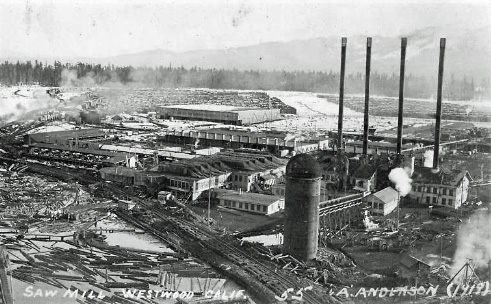
On January 29, 1912, RRLC entered into an agreement with the Southern Pacific railroad. Southern Pacific would build the Fernley and Lassen Railway to what would become Westwood, and the RRLC would build a mill and give the railroad exclusive hauling rights for five years. Railroad construction began at Fernley, Nevada, in June 1912 and reached Westwood in February 1914. On Tuesday, September 10, 1912, T.B. Walker’s son, Clinton, with his two small children, Brooks and Harriett and W.B. Carlin, construction superintendent of the mill and town, did the ceremonial cutting of the first tree. The first lumber was milled on October 1, 1912, at a temporary mill, and the first lumber was cut in the main sawmill in August 1914.
The town of Westwood opened in 1914. (Actually, Westwood was never incorporated as a governmental entity, and even now is listed as a “census designated place.” As this is clumsy, the word “town” will be used here.)
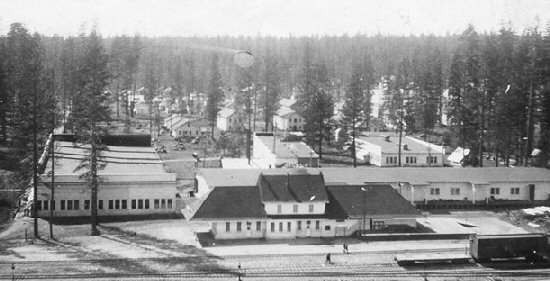
Westwood’s general office was in Minneapolis and its officers were:
- B. Walker: President
- Gilbert M. Walker: Vice President
- Archie D. Walker: Secretary
Officers in charge of construction and operation were:
- Willis J. Walker, Vice President (Minneapolis and Westwood)
- Fletcher L. Walker, Treasurer – Westwood
- F. Pray, Resident Manager – formerly in charge of Akeley Plant
The RRLC owned the:
- Houses
- Apartments
- Dormitories
- Hotels
- Community center
- Churches
- Theater
- Opera house seating 500
- 20 room hospital
- Westwood Club for men
- General store, run by O.S. Lunt from Akeley
- Bakery: 1,500 loaves of bread per day
- Department store
- Water, electricity, telephone, sanitation
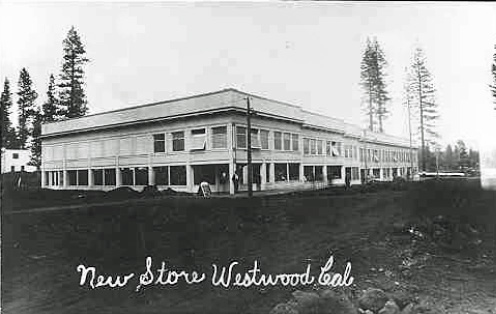
T.B. Walker was ostensibly in charge of the operation, but left the management to his sons. Purdy reports that he was quite unhappy with the politics of California, writing to his son Willis in 1913, “The California Legislature is a sly, reckless gang of socialists, and have succeeded in completely deceiving the people through which they can make a successful war against capital and enterprise.”
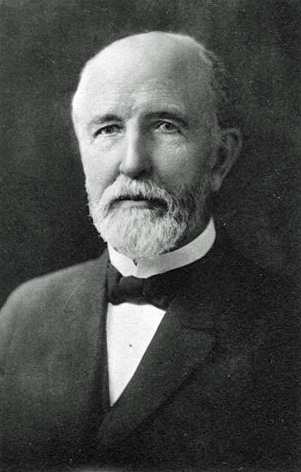
In 1919 T.B.’s son Fletcher L. Walker reported that Westwood had 1,200 people, 800 employees, 350 buildings, a grade school with 80 students and four teachers, ten miles of water pipe, three miles of sidewalk, and the streets were partly paved. As the town was wholly-owned by the company, RRLC had complete control, and as such forbade the presence of liquor. His expectation was that the population of the town would rise to at least 5,000.
In subsequent years, RRLC added a sash and door factory, lath plant, veneer plant, and venetian blind slat factory. Railroad spurs were built into the timber country. The construction of the Westwood complex was more or less complete by 1918. By this time T.B. had relinquished much of his control of company management to his sons Gilbert, Fletcher, Willis, and Archie, and he seems to have become increasingly frustrated with his inability to completely control the business himself.
Westwood was sold to the Fruit Growers Supply Company, a subsidiary (the buying arm) of the California Fruit Growers Exchange of Los Angeles (now known as “Sunkist,”) on November 30, 1944. Besides the mill and the company-owned town, the transaction included about 11,000 acres of timber land in the Light’s Creek Tract (Plumas County), and about 85,000 acres of the Burney Tract (Shasta County). The purchase price totaled more than $11 million. Fruit Growers operated the Westwood mill until 1956, when it was closed down and both it and the town were sold to residents and developers. The mill burned to the ground on November 8, 1956.
The population of Westwood in 2010 was 1,647. A feature of the town is a Walker family mansion.
CONSERVATION
As early as 1903 there was a great deal of consideration in the California forests for sustainability. Thought was given to what timber to cut when, with a plan to cut the large timber and leave the medium and small trees for reproduction in the future. This was only possible, though if the county taxes were reasonable and did not “compel the immediate removal of the timber, as has been done in Minnesota, through the action of local authorities, the state legislature, and the supreme court.” (“T.B. Walker – Captain of Industry,” Minneapolis Journal, November 29, 1903)
[Walker] is now deeply and practically interested in the conservation of the forests we have left, and his extensive experience in the lumber trade, together with his judicious study of the subject, has given him a grasp of it that no other man possesses. On this subject he has delivered a considerable number of fine addresses and written many articles for publication in the press and in pamphlet form. In these he has set forth the only plan of conservation that is intended or expressed as a complete one. And his plan will undoubtedly prove successful if public sentiment and legislative enactments by the government and the timber states back it up. He is striving earnestly to get it adopted and put in practical operation, and seeking to induce the authorities who are desirous of intelligent conservation to join him in the movement. (Shutter, 1923)
Walker wrote articles for the National Magazine; papers for the Conservation Commission, the U.S. Forestry Department, and the U.S. Interior Department; and wrote to the U.S. House and Ways and Means Committee advocating a tariff on lumber.
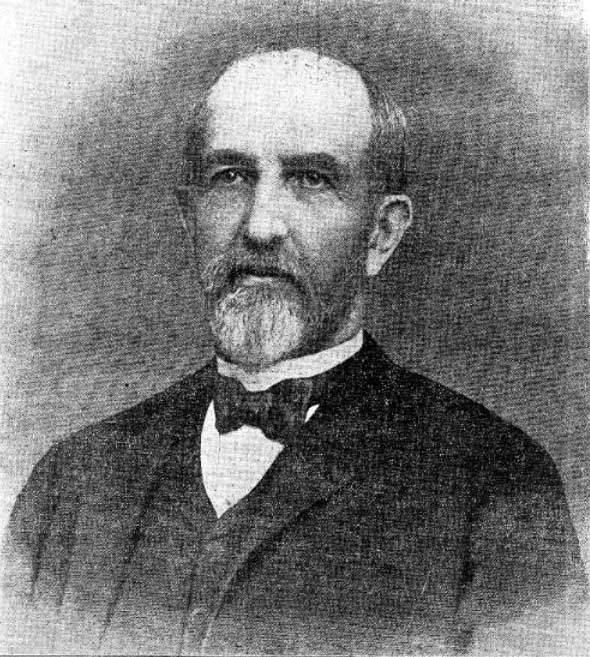
OTHER BUSINESS INVOLVEMENTS
- Crookston Boom and Water Power Company
- International Lumber Company (Minneapolis)
- Metropolitan Trust Company (Minneapolis)
- Minnesota and Dakota Elevator Company (Minneapolis)
- National Lumber Convention (Washington, D.C.)
- Northern Minnesota Log Driving & Boom Company
- Northwestern Elevator Company (Minneapolis)
- Waland Lumber Company
- Hennepin Paper Company with son Gilbert and B.F. Nelson.
- President of the Flour City National Bank (Minneapolis) from 1887 to 1894. Organized in 1887, Walker was elected a year later as President without his knowledge or consent. Under protest he accepted the position until he “peremptorily resigned” on January 1, 1894. (Shutter and McLain, 1897)
- Involved in the Panama-Pacific International Exposition, San Francisco (1915)
- With partner Levi Butler, built the Butler Brothers Building (Butler Square) in 1908
CIVIC ACTIVITIES
- One of managers of State Reform School when it was located in Midway.
- Member of the executive committee of the See America League
- Supporter of the Board of Trade
- President and a trustee of the Minneapolis Society of Fine Arts
- President of the Minnesota Academy of Natural Sciences and its successor, the Minnesota Academy of Science
- Walker was a Radical Republican, with his first vote going to Abraham Lincoln.
- Trustee of the Young Men’s Christian Association (YMCA) of the City of Minneapolis.
- President of the Board of Directors of the Minneapolis Public Library from 1885 to 1928, and placed some of his artworks in the building. This position was apparently elective, and Walker was the Republican candidate.
- Donated the land for the Walker Library in Uptown. The library opened at 2901 Hennepin Avenue South on June 13, 1911.
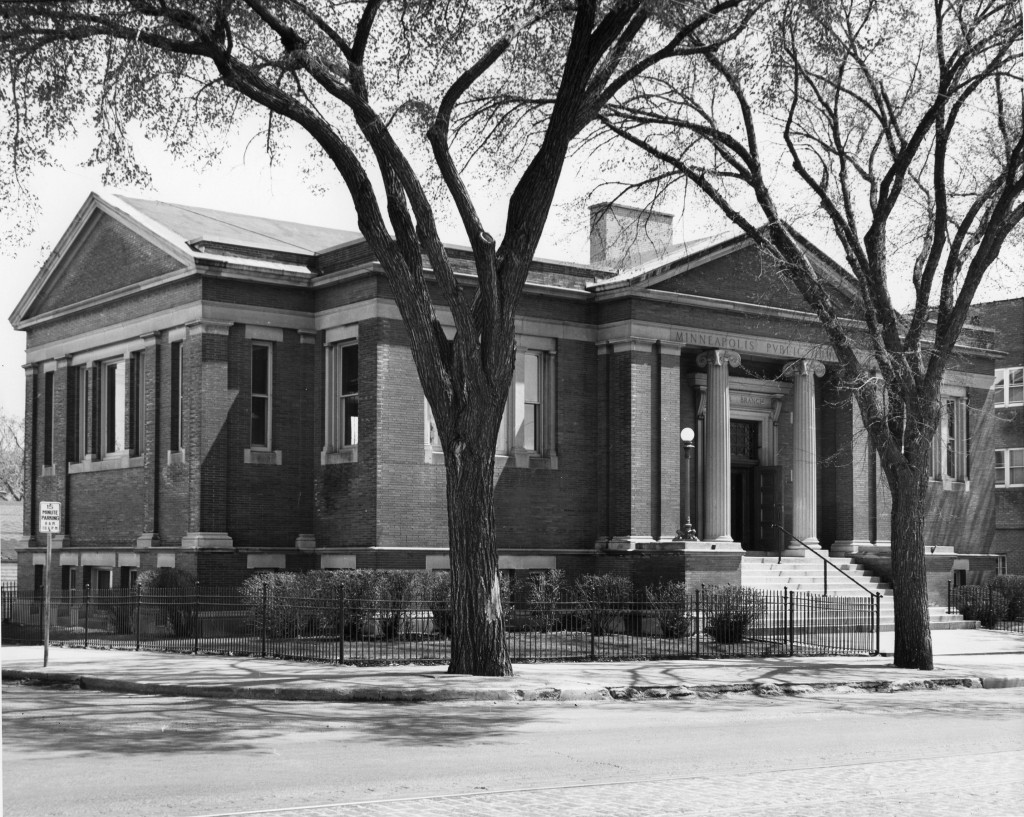
A new Walker Community Library, 2880 Hennepin Avenue South opened on February 7, 1981, which was built out of concrete and earth at a cost of $2.3 million. It was designed by Myers & Bennett and built by George F. Cook Construction. The old library closed on February 7, 1981 and was sold.
The second Walker Library was the first earth-sheltered building constructed by the City of Minneapolis and one of the few underground public libraries in the country. By 1993 several deficiencies in lighting, space, identity, water leakage and accessibility were noted for the building. When it was built, underground building technology was new and untested. Underground buildings, although built to conserve energy, many times ended up being expensive to maintain and Walker Library was no exception. What was revolutionary in 1981 was considered ugly and prone to vandalism in 1993. By 1994 many in the neighborhood wanted to move back to the old library building instead of paying $900,000 in renovations for the leaky underground library. The renovation was still a deal compared to the estimated $5.4 million required to update the old Walker Building which had just been bought by the Junior League.
The renovations in 1995 were done to address structural issues and make the library more inviting. Seven-foot-high brushed stainless steel block letters spelling out L-I-B-R-A-R-Y, designed by Leonard Park Associates Architects, were added to the exterior.
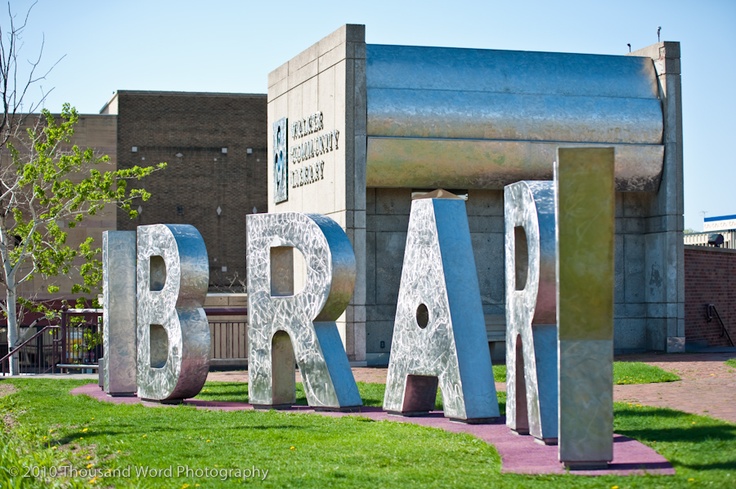
More renovations were done to the parking deck in 2005. In the years afterword, there was more talk of a mixed-used replacement. The building was razed in 2013 to make way for a new above-ground library.
The 1981 building closed on September 22, 2012 and was replaced with a new building designed by VJAA and built by Shaw-Lundquist and Associates. It opened on April 26, 2014.
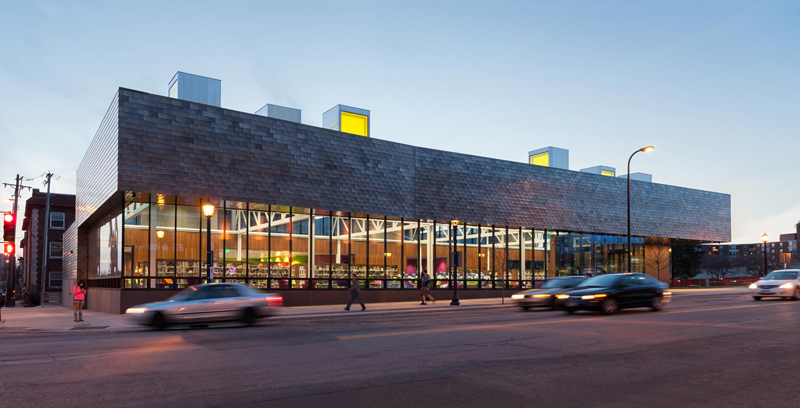
CHURCH ACTIVITIES
- Trustee of the Hennepin Avenue Methodist Episcopal Church (Minneapolis)
- Member of the Executive Committee of the Methodist Episcopal General Conference (Minneapolis)
- President of the Minneapolis Methodist Church Extension Society
- Built a Methodist Church as part of his St. Louis Park endeavor
- Walker donated $3,500 for the construction of a three-level church at 31st Street and 16th So. The congregation of 250 could only raise $2,500, so they named the church after him. He later contributed half of the $6,000 cost of a pipe organ. Walker Methodist Church was dedicated on March 27, 1910. Walker himself continued to be a member of the Hennepin Ave. Methodist Church.
GOOD DEEDS
The articles in the newspapers about Walker, at least in the 1907 compendium, show Walker in the best possible light. Here are stories that exemplify his kindness:
- During grasshopper plague in western Minnesota in 1875, Walker purchased all the turnip and buckwheat seeds he could get from the Twin Cities and Chicago and distributed them to farmers. They were the only late-season viable crops. “News of his free distribution of seeds spread as if on the wing and many farmers walked fifteen or twenty miles to meet the teams and thus avail themselves of Mr. Walker’s beneficence.” (Minneapolis Daily Times, July 30, 1903)
- One biography says that he saved leading citizens thousands of dollars when he put the kibosh on a gold craze in the Vermillion range of Minnesota. He investigated claims of gold and with his knowledge of mineralogy and metallurgy he saw that gold did not exist in extent to pay working. (Saturday Spectator, December 7, 1889)
- During the Panic of 1893 the city of Minneapolis provided an old courthouse building and Walker and others made it into a homeless shelter with 300 beds and a soup kitchen. He also provided meal and lodging tickets to boarding houses and assisted men in finding work. He was accused of encouraging shiftlessness, but when times improved, “all the tramps disappeared from the city.” (Minneapolis Tribune, 6/17/1919)
- Another story is how he learned of a man in Wright County who had been convicted of murder and sentenced to hang. He believed the case was one of self defense, so he hired a lawyer, got a new trial, and the man was acquitted. “That is T.B. Walker in a nutshell.” (Minneapolis Journal, May 12, 1903)
- “When absent from home he leaves instructions that no person shall be turned from his door hungry, and the needy one is always certain to find at least 25 cents worth of sympathy at the Walker mansion.” He received 10 to 45 requests for assistance daily, “a source of much annoyance to himself, but a boon to the needy.” (Minneapolis Journal, May 12, 1903)
- In 1900 he took ill in the mountains of California and was taken in by an elderly couple. The husband died and the widow lost her house, reduced to living in a shack. In 1905 Walker heard about her plight and purchased her house back for her, along with her original 360-acre homestead. (Minneapolis Tribune, August 20, 1905)
- In 1898 he won a Minneapolis Times contest for the most popular citizen on Minneapolis, a feat made remarkable in that the Times was a Democratic paper and Walker a staunch Republican. He earned over 1,000 votes more than second place Thomas Lowry.
CLEAN LIVING
Walker was a teetotaler, and did what he could to keep liquor out of St. Louis Park, Akeley and Westwood. An article in the March 16, 1894, St. Louis Park Mail, reporting that the village had voted dry, said:
It was said that Mr. Walker had said that if license carried he would close every factory in the village. No one believes that Mr. Walker ever said anything of the kind, but the report angered the factory men, they believe they have the right to vote as they choose without a penalty hanging over their heads. It’s lucky for the Park that the story was withheld so long.
Although St. Louis Park had already incorporated as a Village by the time Walker bought his property in 1890, the two “towns” of Akeley and Westwood were unincorporated and wholly owned by the RRLC. Thus it was easier to impose a strict no liquor policy in those communities. There were plenty of roadhouses east of Westwood, however.
A long biographical article on Walker in the Minneapolis Tribune, dated October 25, 1903, described him thusly:
In personal appearance Mr. Walker is a well-proportioned man of a trifle over the average height. His face has an exceedingly kindly appearance; that of a man who could well be entrusted with anything, and who would faithfully abide by the trust. Were it not for a tinge of gray in his hair and beard, no one would believe that he was over forty years old, as he has the active movements of a young man and every gesture shows the vigor of the early prime of life.
In 1923 Shutter said he:
- Has moral endowments as well as mental power of a high order.
- Has a clear head and a strong mind
- In the interesting and domestic character of husband and father he is particularly amiable, enjoying the unbounded affection of his family
- As a man he is just, generous and upright
- Cultured and refined
- Of a genial and sympathetic nature
- His whole life, domestic and commercial, is marked by fixed principles of purity and benevolence.
His wealth was estimated at anywhere from $30 to $100 million, but “The only evidence of affluence is a diamond shirt stud of amazing proportions.” (San Francisco Bulletin, December 5, 1903)
In 1905 Walker’s friends urged him to run for U.S. Senator, but he said “he was in no wise a ‘receptive’ candidate.” (Minneapolis Times, March 2, 1905)
The Duluth News-Tribune published a whimsical piece on Walker’s tax bill of about $500,000. Apparently Walker chafed at “this general prejudice against the so-called capitalist, unjustly spread against a most useful class of citizens leading the most strenuous lives in building up and maintaining the public interest.” (“May Day Problem of the Rich,” August 11, 1906)
In 1915 Walker purchased the Thomas Lowry estate at #2 Groveland Terrace. His intention was to live in the house and donate the other three acres for an art museum. He moved into the house in 1917. The house at Groveland Terrace was demolished around 1932; an office building for the North American Life Insurance Company was later constructed on the site.
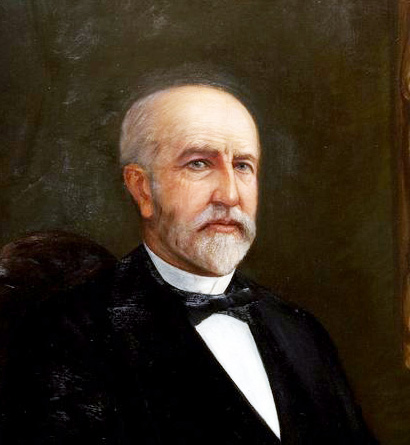
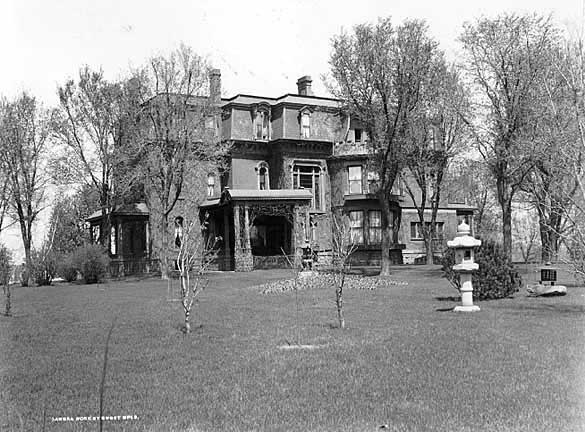
In 1923 Walker was among the ten wealthiest men in the world.
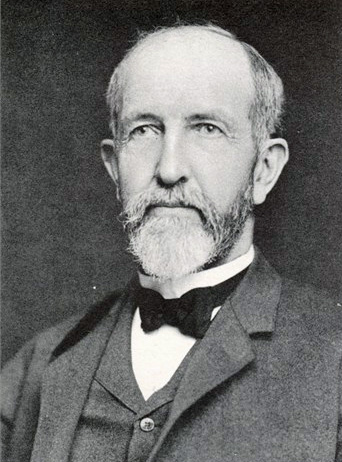
T. B. Walker died at his home in Minneapolis on July 28, 1928, at the age of 88. He is buried at Lakewood Cemetery in Minneapolis.
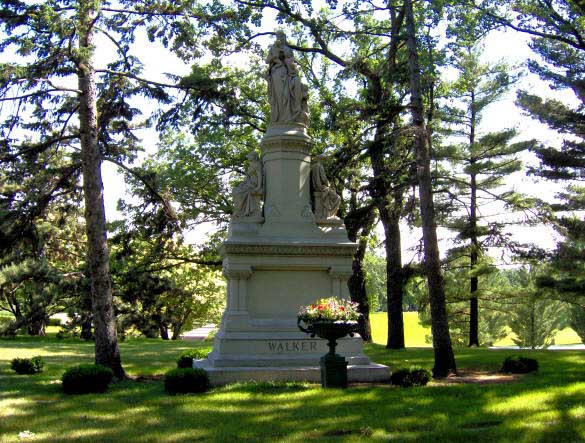
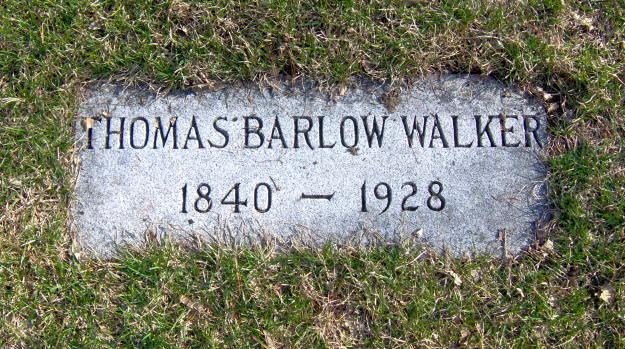
HARRIET WALKER
Harriet Granger Hulet Walker was born in Brunswick, Medina County, Ohio, on September 10, 1841. She was the daughter of Hon. Fletcher and Fanny (Granger) Hulet, natives of Massachusetts.
Harriet’s siblings included:
- Clara S. Hulet Wheeler
- Gilbert Hulet (circa 1836-1854)
- Margaret Hulet
- Marshal F. Hulet (circa 1846-circa 1927)
- Martha W. Hulet Lyon.
The Hulet family moved to Berea, Ohio, in about 1847. Harriet attended Baldwin University, a Methodist-affiliated institution located at Berea. She studied vocal and instrumental music, and also Latin, Greek, and German. She met T.B. at school in 1856, and they got to know each other while T.B. worked for her father and she was her father’s secretary and bookkeeper.
On December 19, 1863, Walker returned to Berea, Ohio, and married Harriet, who had been his college classmate, constant companion since he was 16, and his boss’s daughter. After spending the winter in Ohio they made their home in Minneapolis.
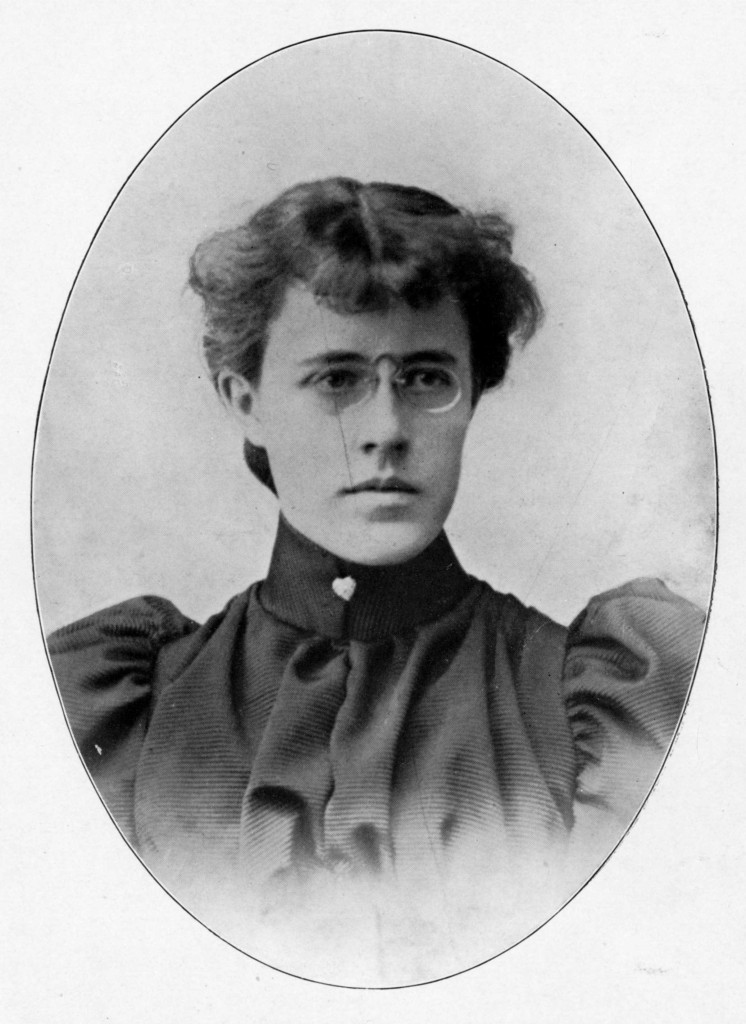
After her first years in Minneapolis spent raising her eight children, Harriet turned to charity work, focusing on the needs of women. She “has not been afraid to soil her skirts by lifting her fallen sister even from the gutters … she has visited those who are sick and in prison and in any way afflicted or distressed.” (Saturday Spectator, December 7, 1889) Examples are:
- Walker Methodist Health Center: In 1876 Harriet, Abby Mendanhall, Charlotte Van Cleve, and Euphemia Overlock established the original Bethany Home “for the reformation of fallen women,” a home for unwed mothers and their children. In 1930 Bethany Home became the Harriet Walker Maternity Hospital and broadened its services to include married women with limited resources seeking maternity care and older women seeking board and care. In 1945 the Walker Methodist Home opened its doors following the merger of the maternity hospital with the Elim Home for the Aged. Walker Methodist Health Center opened in 1965 and became one of the largest health care facilities in Minnesota. A new health care center and housing community, Walker Place, opened in 1983.
- She persuaded four local women’s groups to lobby the Minneapolis Police Department to hire a matron (policewoman); they were able to choose the person in exchange for paying half her salary.
- She was president of Northwestern Hospital, originally a Minneapolis hospital for women and children, from 1862 until 1917.
Some of Mrs. Walker’s other involvements included:
- The Women’s Council of the City of Minneapolis
- The Hennepin Avenue Methodist Episcopal Church (Minneapolis)
- The Nonpartisan National Women’s Christian Temperance Union; fought the “blight of the liquor curse.” The WTCU had become political and she quit but rejoined the nonpartisan organization.
- The Minneapolis Association Opposed to the Further Extension of Suffrage to Women (although Twin City Methodism says that she was an earnest advocate of Women’s Suffrage)
- The Newsboys’ Home
- Kindergarten Association
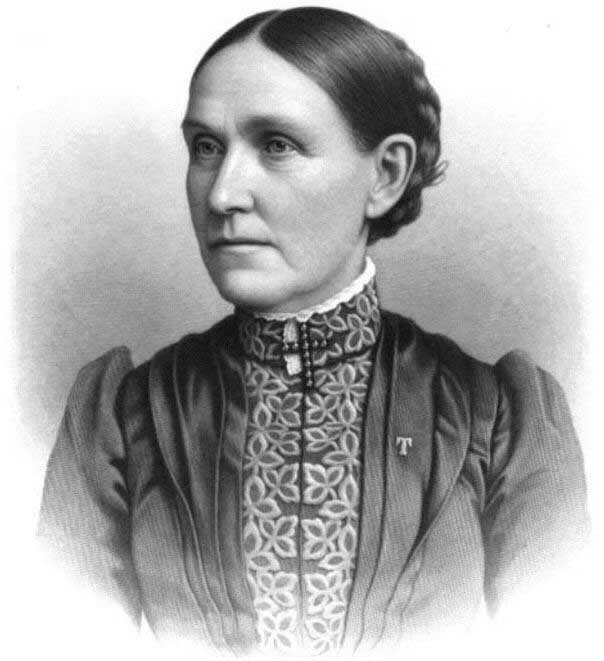
Harriet died in New York on January 13, 1917, while accompanying her husband on a business trip there. She is buried at Lakewood Cemetery, Minneapolis.
WALKER CHILDREN
The Walker home fostered industry, and contained machine, carpenter, and blacksmith shops and an extensive gymnasium. The children were “active, enterprising, rough, rugged, and taught to play, hunt, fish, row boats, etc.” (Neill). They also abstained from drinking and smoking.
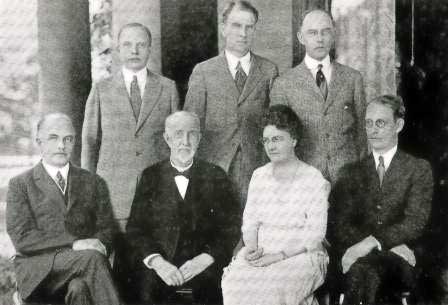
- Gilbert Marshal Walker (September 16, 1865, Minneapolis – December 28, 1928) served as vice president of the RRLC from around 1887 until his death in 1928, making his home in Minneapolis. Information suggests that Gilbert suffered a nervous breakdown in 1899, and that he was subsequently relatively uninvolved in Red River affairs until 1914 or later. Like his father, he seems to have advocated caution and moderation, particularly as his brothers Willis and Fletcher sought to expand the company’s California operations. Gilbert died five months after his father, on December 28, 1928.
Gilbert married Susan M. (“Suzie”) Rogers (circa 1866-1951) in 1887. She was born in Carlinville, Illinois to Mr. and Mrs. J. T. Rogers, came with her family to Minnesota, and attended Hamline University until her marriage to Gilbert. Gilbert and Susan had no children. Susan was survived by a sister Martha Rogers (Mrs. Jesse W.) Shuman; a nephew, John Rogers Shuman; and a niece, Susan Mary Shuman (Mrs. Richardson B.) Okie.
- Julia Anstis Walker Smith (September 21, 1865, Minneapolis – December 4, 1952) married Ernest Frederick Smith (d. 1936) in 1895. Julia became president of the Bethany Home Association (Minneapolis) in 1917 after the death of her mother. She served for many years as a director of the RRLC, although she apparently took little or no active part in its business affairs or in formulating its policies. Julia was also a member of the Walker Associates family partnership; treasurer of the Pacific Investment Company (circa 1935); and secretary, treasurer, and a trustee of the T. B. Walker Foundation, Inc.
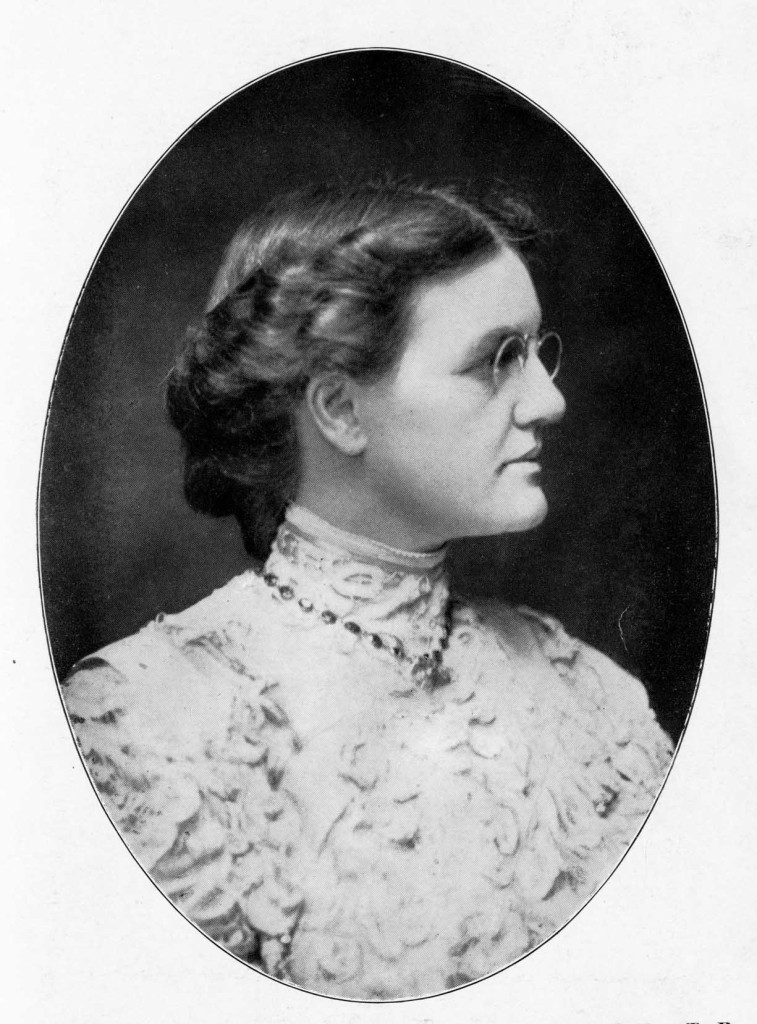
Ernest F. Smith was a partner with L. W. Zimmer in Smith & Zimmer, Minneapolis manufacturers and jobbers of farm implements, buggies, and bicycles, circa 1893-1900. He served as president of the Hennepin Lumber Company (Minneapolis), circa 1905-circa 1919; president of the Lincoln Trust and Savings Bank (Minneapolis), circa 1920; vice president of the Lincoln National Bank (Minneapolis), circa 1922; president of the Lumbermens Finance Corporation, circa 1923-circa 1927; treasurer of the Arthur P. Smith Company, Minneapolis dealers in insurance and mortgages, circa 1924-circa 1925; president of Smith & Son Company, a Minneapolis real estate holding company, circa 1935; and president of Smith & Sons Investment Company and its predecessor organizations, circa 1926-circa 1935.
Ernest and Julia had four children; Walker (b. 1896), Dana C. (b. 1898), Hulet P. (b. 1900), and Justin V. Smith (1903-1979). The family moved from Minneapolis to Pasadena, California around 1926. The Smith sons took an active role in RRLC affairs, in addition to carrying on the business of Smith & Sons Investment Company.
- Leon B. Walker was born in 1868 in Minneapolis. He had begun to work with Gilbert in Crookston and Grand Forks but “in early manhood was taken from the home.” He died on July 7, 1887, at age 18, “taken away just as he was entering upon manhood’s estate.” One report was that he was “suddenly stricken with fever” and within a week he was gone.
- Harriet Hulet Walker (October 1870 – January 11, 1904), also referred to as “Hattie” and as “Harriet Jr.,” married Frederick (“Fred”) Opal Holman (1857-1897), pastor of the Hennepin Avenue Methodist Episcopal Church (Minneapolis), in 1893. Holman left the active ministry in 1894 because of failing health, and he and Harriet, who evidently was also in poor health, spent the next several years travelling in the Southwest in a horse-drawn wagon and camping out in a tent in an effort to alleviate their suffering. Fred Holman died in 1897, apparently of tuberculosis. Harriet spent the final two or three years of her life at Pasadena, California, where she died of “heart trouble” in 1904. The Holmans had no children.
- Fletcher Loren Walker (February 15, 1872, Minneapolis – November 1, 1962, San Mateo, California) became treasurer of the RRLC in 1898, and its vice president and treasurer circa 1930. He supervised the mill at Akeley, (circa 1899-circa 1915), and seems to have spent a good deal of his time there in the early 1900s. He was the Walker family representative on location in Westwood, which became his home beginning in 1912; he was there when the town was platted, the houses located, the mill constructed, and the first logs cut. Described in 1933 as “a mechanical inventive genius,” Fletcher continually advocated expansion and modernization of the operation, manufacturing, and product line diversification, the investment of more money in the plant, and the purchase of additional equipment and machinery– frequently in the face of objections from the Minneapolis office. Fletcher resigned as vice president, treasurer, and director of the RRLC in 1950.
Fletcher was married to Eveline Van Winkle Sammis (1871?-1964). They had four sons: Theodore S. (b. 1901), Fletcher Jr. (“Cub,” d. 1929), Kenneth R. (b. 1906), and Norman B. Walker.
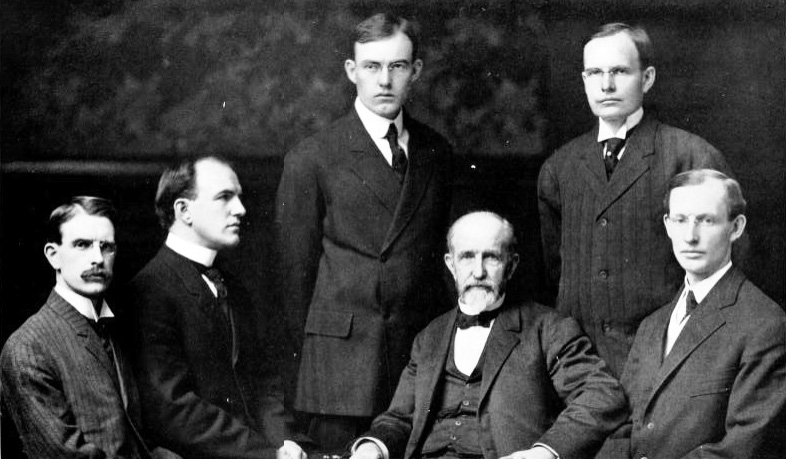
- Willis Jay Walker (November 6, 1873, Minneapolis – March 15, 1943, San Francisco) was directly responsible for the Walkers’ Minnesota logging operations during the time they were centered in Akeley (circa 1899-circa 1915). He also served as cashier of the RRLC prior to his years as a vice president (circa 1915-circa 1929) and president (circa 1929-1933). A management shake-up precipitated by the Walkers’ Minneapolis and San Francisco bankers resulted in Willis’ replacement as president by his brother Archie, he being named instead vice president and chairman of the board of directors (1933-1943). Willis lived in Minneapolis until about 1915, when he relocated in San Francisco and headed the company’s office there.
Willis was vice president of the Barlow Realty Company (circa 1936), and was involved in some of the other family-owned Minneapolis property management businesses, including the Pacific Investment Company and the Walker-Burton Company. He was also involved in the Four Walkers and the Walker Associates family partnerships; the Federal Lumber Company, the International Lumber Company (Minneapolis), the Waland Lumber Company, and the Walker Hovey Lumber Company; the Canby Railroad Company (owned by the Waland and Walker-Hovey companies); the Minneapolis Esterly Harvester Company, the Minneapolis Jarless Spring Carriage Company, and the Thompson Wagon Company; the Minneapolis Land and Investment Company; the Hennepin Paper Company; the Lassen Electric Company (Susanville, California); the Minneapolis Central City Market Company; the Northeastern Ry. Company (Minneapolis), the Northern California Railroad Company, and the Piute Railroad; the Sugar Pine Sales Company; and the Westwood National Bank. Willis was also a trustee of the T. B. Walker Foundation, Inc. (Minneapolis).
Willis married Alma Brooks (1875-1981), a sister of Della Brooks (Mrs. Clinton L. Walker), in 1897. They had one child, Leon Brooks Walker (January 1899 – 1965).
- Clinton Lee Walker (August 1875, Minneapolis – February 29, 1944, Piedmont, California) graduated in 1898 from the School of Mines at the University of Minnesota. He worked from 1898 to 1913 for T. B. and the RRLC in northern California, where he was involved in topographical and railroad surveys, timber estimating, mapping, ranching, ditch surveying and construction, the search for a site for the sawmill and town that would eventually become Westwood, and sawmill drafting. For one season (circa 1912-1913) he was resident manager at Westwood during the construction and early operation of the new mill and town.
In 1913 a disgruntled Clinton severed his official ties with the RRLC and struck out in pursuit of other interests, principally the invention of automotive parts and accessories. Around 1915 he formed a partnership with Edward J. Pennypacker, another inventor, in the Pennypacker Company, based in San Francisco; Clinton was president, Pennypacker was general manager. In 1917 Clinton applied to join the Engineer Officers’ Reserve Corps of the U.S. Army. He served also at this time as “special negotiator” for the Great Western Power Company, San Francisco. He invested in land of his own, and later (circa 1928) in motion picture making. After 1913, Clinton occasionally did work for his father and for the RRLC on a job-by-job basis, although he seems to have devoted most of his time to his inventions.
By 1930 Clinton and his son Brooks were working together as “Automotive and Aviation Development Engineers,” with laboratories and an office at Clinton’s home at Piedmont (near Oakland), California. By this time Clinton had also rejoined the RRLC as a vice president (“2nd vice president” until 1933, “vice president” afterwards), which post he evidently held until his death in 1944.
Clinton was a bit of a maverick, and frequently found himself in conflict with his father (whom he claimed favored his brothers over himself) and with his brothers, particularly Willis. Resentment, suspicion, and jealousy between T. B.’s sons, particularly between Willis and Clinton, is evident throughout. The continual bickering and infighting came to bear significantly upon the sons’ careers and upon RRLC affairs.
Clinton married (circa 1901) Della Brooks (1878-1978), a sister of Alma (Mrs. Willis J.) Walker. They had three children:
- Brooks Walker (1902-1984)
- Harriet E. Walker Henderson (1904 – 2007)
- Alma Virginia Walker Hearst McKeever (1908 – 1971).
Della later remarried. Descendants of Clinton continue to live in Northern California and own 142,500 acres of Forest Stewardship Council-certified sustainable timberland known as the Shasta Forests.
- Archie Dean Walker, Sr. (May 1882 – 1971) graduated from Minneapolis Central High School in 1901. He attended the College of Engineering at the University of Minnesota, and transferred to Cornell University in 1904.
ARCHIE DEAN WALKER, SR.’S BUSINESS INTERESTS:
- Secretary of the Red River Lumber Company from 1908 until 1933. Replaced Willis Walker as company president in 1933 to appease creditors and was president until 1956 through the company’s sale of Westwood and liquidation of its other assets.
- President of the Barlow Realty Company from the 1930’s until the 1960’s.
- Involved in the Industrial Investment Company
- Pacific Investment Company
- Penwalk Investment Company
- Walker-Pence Company and its subsidiaries
- Walker-Burton Company
- Four Walkers
- Walker Associates
- Walker Brothers family partnerships
- Foote Lumber and Coal Company
- Globe Lumber Company
- Waland Lumber Company
- Hennepin Paper Company
- Lincoln National Bank
- Lincoln Trust and Savings Bank
- Minneapolis Central City Market Company
- Minneapolis Land and Investment Company
- Minneapolis, Northfield & Southern Railway Company
- Northwest Warehousing Company
- Superior Land Company
- Kicherer Motor Company
- Lake Hassel Gun Club, Inc.
- Northome Improvement Association
- Northome Private Roads, Inc
- Member of the Minneapolis Civic and Commerce Association
- Member of the Hennepin Avenue Improvement Association
- President of the city library board
- Chairman of the board of trustees of Hennepin Avenue Methodist Episcopal Church from 1955 to 1958
- President of the Walker Methodist Home
- Trustee and the president of the T. B. Walker Foundation, Inc. from 1929
- Established the Archie D. and Bertha H. Walker Foundation.
1950 KNOX AVE. SO.: THE ARCHIE WALKER HOUSE
The structure is a three story, 4106 square foot, 12 room, four bedroom, five bathroom, house built for Archie Dean Walker, Sr. The house was designed by Humphrey and Hardenbergh and completed in 1949. In the 1960s James (partner, Faegre & Benson) and Barbara Fitzmaurice purchased the home from the Walker family. In 1990 it was sold to R. Bellafronto and D. Bellafronto, board members, respectively, of the Walker Art Center and the Guthrie Theater. Wilson and Peterman also are collectors, and their house has been redesigned by Randall J. Kipp Architecture to feature their collection of contemporary art works.
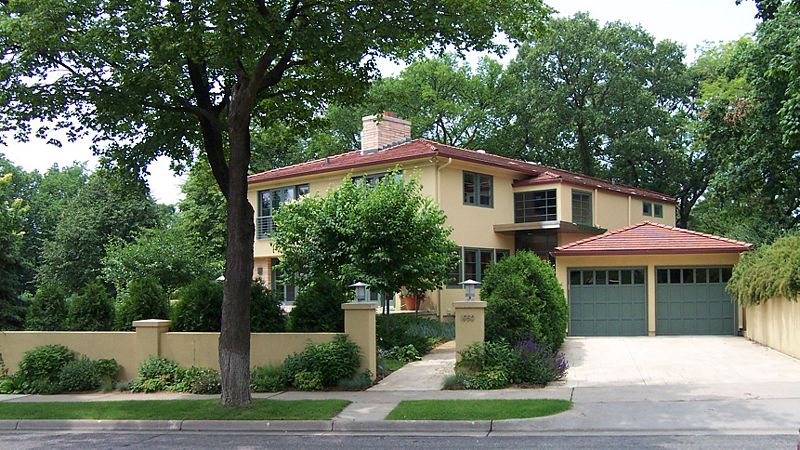
Archie, Sr. married Bertha Willard Hudson (1882-1973) in 1906. She was a daughter of the Minneapolis jeweler Josiah Bell Hudson. The couple had six children:
- Hudson D. Walker (1907-1976)
- Louise Walker McCannel (1915- )
- Phillip H. Walker (1917-1969)
- Stephen A. Walker (1910- )
- Walter W. Walker (1911- )
- Archie D. Walker, Jr. (1920-2008)
ARCHIE DEAN WALKER, JR.
Archie, Jr. was born March 13, 1920, in Minneapolis, the youngest of six children. After serving as a navigation instructor during World War II, he married Amy Katherine Camp in 1944 and they raised four children in Minnesota:
- Katherine Diantha Walker Griffith, born July 1, 1945. Married David H. Griffith, December 30, 1966
- Lita Walker West
- Stephen Archie Walker
- Archie Dean Walker III (died in 1999)
ARCHIE, JR.’S MINNESOTA BUSINESSES
Imported Motors, 4317 Excelsior Blvd, 1952 to 1960
West Side VW, 1960 to 1965
BMW in Wayzata, 1965
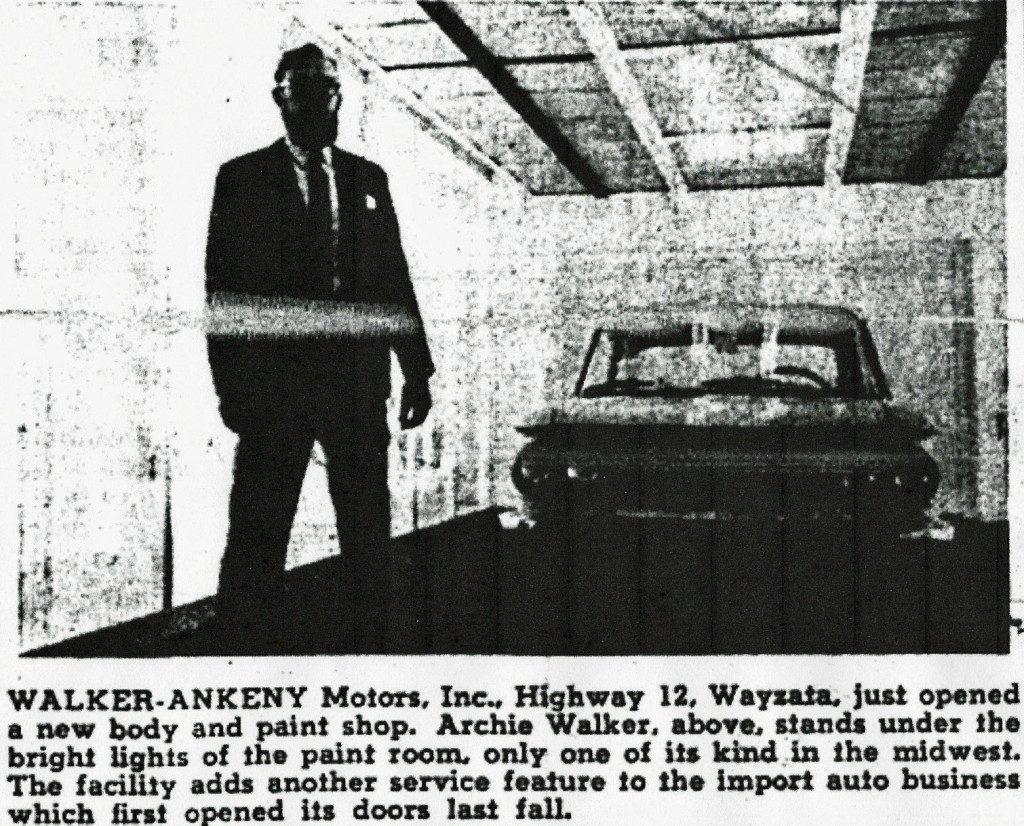
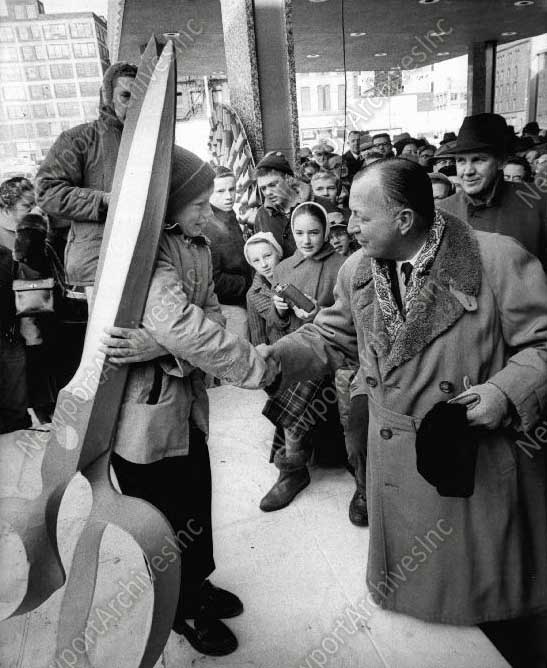
IDAHO
In the 1960s they sold the business and decided to head West.
Amy Walker said she thought cattle ranching would be akin to raising children. You feed them. You clean up after them. They spent a year finding the perfect spot, deciding in 1972 on nearly 2,400 acres northwest of Bliss, where they lived for 27 years (to 1999).
“Our children had flown the nest, and we always wanted to ranch,” said Amy Walker, chuckling at the thought. “Yes, there was some cause for pause.”
Amy Walker went to cattle school to learn the business, and used part of the land to plant potatoes. Archie Walker tackled the farm equipment, learning how to adapt whatever they had to fit their needs. Amy Walker said her husband was an avid bird watcher and would spend hours ensuring their property became a safe haven for a variety of fowl, including golden eagles, swans and sandhill cranes.
“He focused on habitat for birds on the ranch as much as trying to support the ranch. I know I told him, ‘Honey, why don’t you just put dollar bills on the fields? It would be easier.’ ”
“We would have been married 64 years next month, and I was never bored for a single day,” she said. “He was fun. He was entertaining. He taught me a lot.
In addition to grand views and an abundance of wildlife, Archie Walker noticed something else about Idaho: Heavy alcohol abuse and little help for its victims. “He said, ‘These people need help,’ ” Amy Walker said.
WALKER CENTER FOR SUBSTANCE ABUSE
It’s safe to say that the Walker Center would not exist had it not been for Archie Walker and his public discussion about his own battle with alcoholism.
Walker had completed treatment in 1962 at Minnesota’s famed Hazelden clinic.
“He was drinking heavily, and it crept up on him for 10, 11 years,” Amy Walker said. The treatment “worked wonderfully for him, but when he came to Idaho, it was like going back 30 years.”
Amy Walker described how the couple noticed a sort of culture of drinking, recounting stories about how it was common to see people drinking at school events, places people wouldn’t drink today.
So, out of Archie Walker’s desire to help others, the Walker Center was born. Walker Center for Substance Abuse opened in 1976 in an abandoned tuberculosis hospital in Gooding, Idaho. The center, renamed in the 1980s for its founder, now has offices in Gooding, Twin Falls and Boise. The Walkers stayed active with the center. In 2003, a $5.3 million building in Gooding was dedicated after Walker and his wife, Amy, donated $1 million and helped to raise the rest of the money. a portion of their money from selling the ranch to help build a new facility in Gooding.
Archie Walker never hid his battle against alcoholism and strongly urged people to speak out about their experiences.
“Alcohol is a shame-based illness, with a strong stigma,” he once said. “We need to put a face on recovery, get away from the shamed-based approach to the disease and treat it as it should be treated – with joyful recovery.”
Archie D. Walker, Jr. died in an assisted living facility in Vancouver, Washington, April 17, 2008.
T.B. WALKER’S ART COLLECTION
THE GALLERY
Walker art collection started with some modest chromos and engravings. “When too poor to buy oil paintings, he bought chromos, but they were the best.” (Saturday Spectator, December 7, 1889) (A chromolithograph is a colored picture printed by lithography, especially in the late 19th and early 20th centuries.)
In 1874 he bought his first important painting, a monk, by Tambourini. In about 1881 he began buying pottery, porcelains, and jades. The jade collection started with a chance purchase at Tiffany’s in New York. Shutter says that his collection was “without any well defined object in view, except to be surrounded by beautiful things.” In 1879 he opened his home at 803 Hennepin Avenue to the public with 20 paintings on display, every day but Sunday – “the man in overalls being just as welcome as the man in broadcloth.” (Shutter, 1923) He quickly filled his home and built eight additions on the sides and back of the property to house and display his collection of art objects.

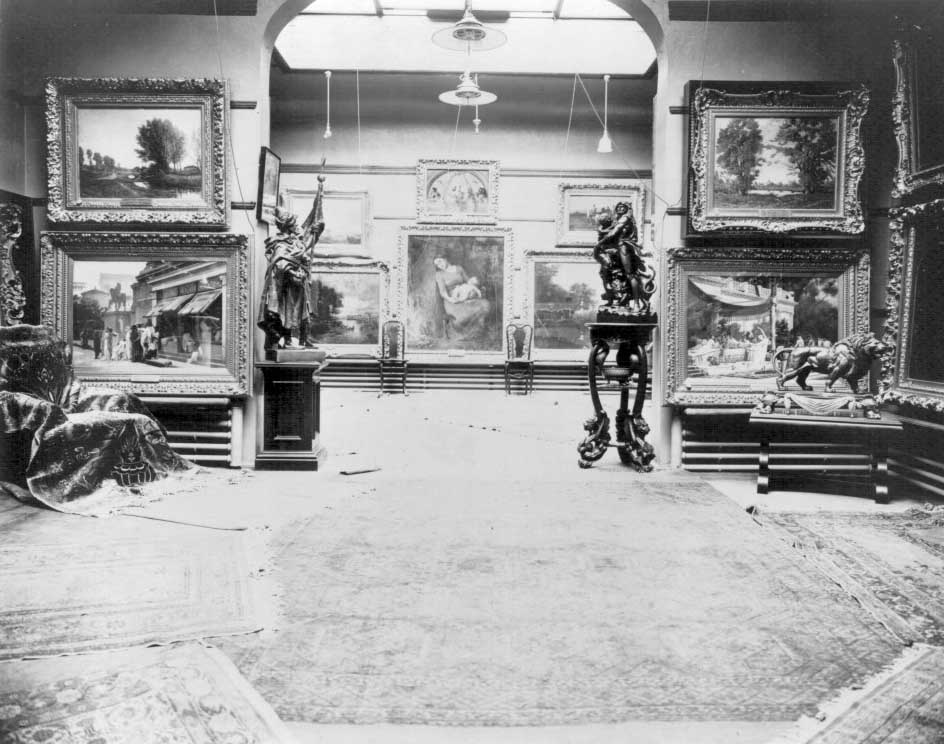
By 1915 Walker’s gallery reportedly consisted of 14 rooms, each with a different theme, such as:
- The Jade Room
- The Jean-Claude Cazin Room
- The Miniature Room
- The Bronze Room
The galleries were visited by about 100,000 people annually.
In 1915 Walker purchased the Thomas Lowry Estate on Lowry Hill. His intention was to live in the house and donate three acres to the City of MinneapolisIn for a museum, to be known as Walker Terrace. He moved into the house in 1917. On October 12, 1918, Walker presented his collection as a gift to the Minneapolis Library Board, amid much gratitude and speechmaking. The City did not accept the offer for five years, and only then on the condition that $250,000 in bonds would be sold. The deal fell through, and Walker funded the project himself.
Walker Galleries, Inc. was incorporated in 1924. The T.B. Walker Foundation, Inc. was incorporated in 1925 to own and manage the collection and gallery after the city of Minneapolis refused to accept the collection as a gift.
In 1926 Walker completed a new gallery building on the site of the present Walker Art Center, 1710 Lyndale Ave. So. This building, designed by architects Long and Thorshov, was opened to the public on May 21, 1927.
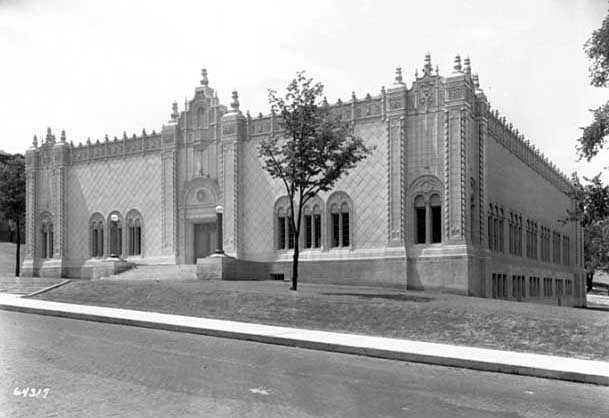
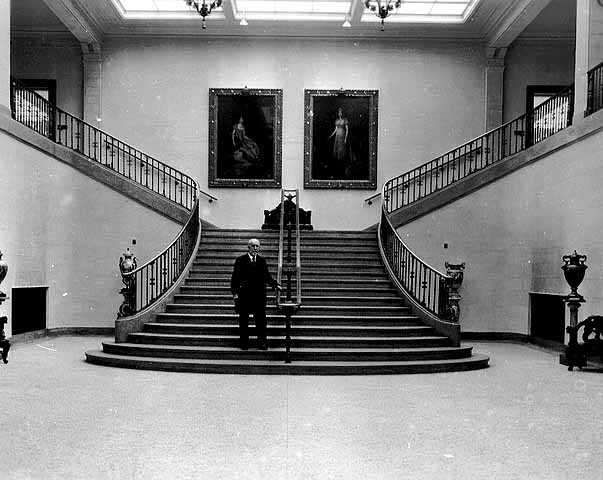
In 1939 the Walker Art Galleries were renamed the Walker Art Center. Other changes:
- Initiation of programs in education
- Temporary exhibitions
- Plans to add American contemporary works
In the 1940s a gift from Mrs. Gilbert Walker made possible acquisition of modern art, including pieces by Franz Marc, Lyonel Feininger, and Edward Hopper.
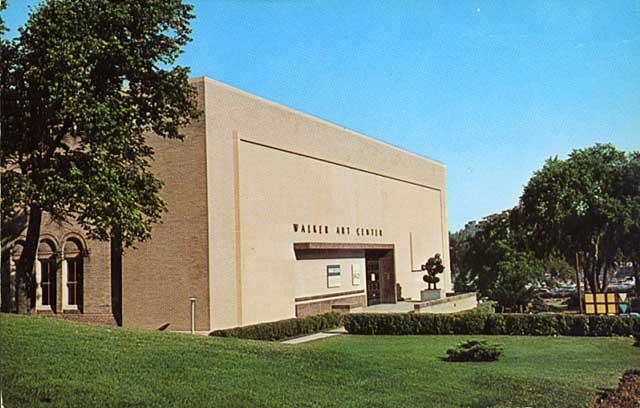
In 1969 the 1926 gallery was demolished.
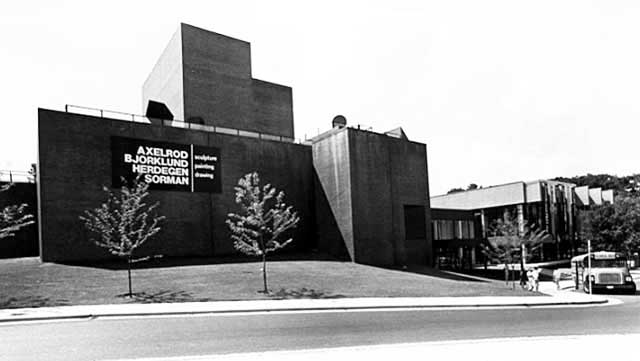
The Minneapolis Sculpture Garden, adjacent to the Walker, opened in 1988. It is one of the country’s largest urban sculpture parks. The piece “Spoonbridge and Cherry (1985-1988) by Claes Oldenburg and Coosje van Bruggen, has become a symbol of the Twin Cities.
An expansion of the Walker, designed by Herzog & de Meuron, opened in April 2005. It increased indoor and outdoor facilities, including the William and Nadine McGuire Theater. The Walker Art Center attracts more than 700,000 visitors each year.
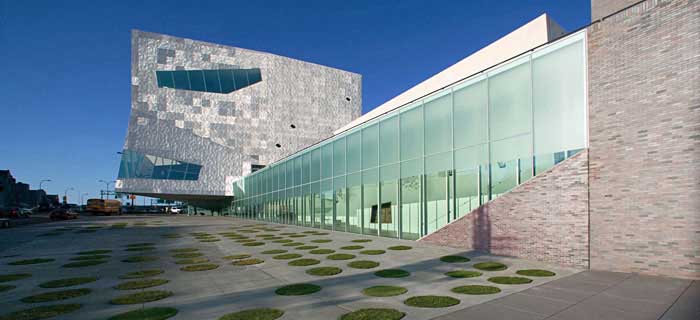
WALKER’S COLLECTION
- Bronzes
- Ancient jewels
- Almost 1,000 pieces of Han Dynasty Chinese; Greek; Persian; and Japanese pottery
- Old Wedgewood ware
- 216 ancient Egyptian, Phoenician, Roman and Syrian necklaces
- 143 Egyptian scarabs
- Greek vases, glass, Tanagrans
- Chinese idols and carved ivory snuff boxes
- Polished pearl clam shells
- Lamps
- Instruments
- Ancient coins
- Shells from the southern seas
- Hall of Beautiful Jade: 13 large cabinets of sculptured jade stone, crystal, rose, blue and other varieties of quartz, amethyst, chalcedony, lapis-lazuli, malachite, scarnelian and other varieties of agate and amber, all deftly carved by Chinese artisans.
COWBOYS AND INDIANS
Walker hired artist H.H. Cross to paint from life 118 portraits of Indians (including Red Cloud, Sitting Bull, American Horse, Hole in the Day, Geronimo, and Rain in the Face), scouts, guides, Indian fighters, and frontiersmen such as H.H. Sibley, Buffalo Bill Cody, Kit Carson, and Generals Nelson A. Miles, W.S. Marney, and George A. Custer. Buffalo Bill wrote:
I have had the pleasure and delight to see quite a number of the paintings of Indians painted by H.H. Cross, for T.B. Walker’s great collections. I knew personally and intimately, on the war path and in peace, Little Crow, Cut Nose (I have Yellow Hand’s scalp), Sitting Bull, Black Heart, Flat Iron, Iron Tail, American Horse, Big Foot, Kicking Bear, Red Cloud, Red Shirt, Rocky Bear, Sword, Hump, Rain in the Face, John Grass, Gall, Plenty Horses, Short Bull, Spotted Tail, Geronimo, Washakie, Tall Bull, Roman Nose, Curley, Powder Face, and the paintings of these people are true to life.
IVORIES
Some of the “cutest” items in the collection were almost 300 ivory miniatures. “Each of them represents a complicated scene of people, animals of different kinds, together with trees, dragons, boats and horses and other things. None of them is over four inches across the base. Each is carved in the most minute and elaborate manner. Every group has a piece inlaid on the bottom, giving the name of the artist and the date of the carving. One scene represents a lot of harpies who have found a woman, a creature which they have never before laid eyes on. They are subjecting her to a various tests, one of which is flying, an art of which they themselves are masters. In another several imps have found a large drum which they are testing in various manners.” (“The Bronze Room,” Minneapolis Times, August 18, 1903)
THE PAINTINGS
Shutter wrote in 1923 that there were 346 paintings at the Walker house, 81 in the art gallery at the Public Library, and 34 paintings of Bible scenes in the art gallery of the Hennepin Ave. Methodist Church.
Portrait of General Washington by Rembrandt Peale (Walker’s first acquisition)
Napoleon in his Coronation Robes by David
Evening Call by Jules Breton
Passing Shower by Bouguereau
Spanish Muleteers Crossing the Pyrenee by Rosa Bonheur
Nymphs and Scenes in Old Rome by Corot
Barber Shop of Licinius by Boulanger
Dispersion of the Nations by Wilhelm Von Kaulbach
Job and his Messengers by Poole
Battle of Trafalgar by Jazet
Morning News by Vibert
Original portraits of Napoleon, Josephine and Marie Louise by Robert Lafevre
En Tonkin by Detaille
The Erring Woman Before Christ by Rembrandt (and nine other Rembrandts)
In 1889 Walker traveled to France to pick up some art for his collection, and focused on a portrait of Napoleon painted by Robert Lefevre. Whereas most portraits of the Emporer were exaggerated, Napoleon dearly wanted a portrait that reflected how he really looked. The portrait was incredibly valuable, and traveled through several hands through the years. Walker tracked down the owner, who repeatedly said that it was not for sale. Finally the owner gave some outrageous amount, and Walker pulled out his checkbook and paid it. Adding insult to injury, the painting was to be the highlight of an exhibition, but Walker got it safely out of the country. (“A Yankee’s Daring Trick Baffled the Frenchmen: How T.B. Walker Secured the Most Authentic Portrait of Napoleon; a Clever Ruse which Enraged a Nation,” Minneapolis Sunday Journal Magazine Section, October 8, 1905)
Other paintings were by the artists:
- Achenbach
- Anastasi
- Anders
- Barker
- Beechey
- Benedictor
- Berry
- Bierstadt
- Bogert
- Bol
- August Francois Bonheur
- Both
- Brown
- Busson
- Cabanel
- Carpentire
- Cazin
- Cederstrom
- Chaigneau
- Cipriani
- Claus
- Coello
- Coomans
- Cotes
- Coypel
- Crochepierre
- Crome
- Cuyp
- Dahl
- DeBrush
- DeHaas
- Delphy
- Delmont-Breton
- Del Piombo
- Deve
- Diaz
- Dupre
- Ernst
- Esselins
- Faulkner
- Ferrier
- Foscari
- Francais
- Franck
- Frere
- Froment
- Gainsborough
- Gericault
- Hamilton
- Hamman
- Harpignies
- James M. Hart
- William Hart
- Hermann
- Hire
- Hogarth
- Holbein
- Ingres
- Inness
- Isabey
- Jacque
- Jacquin
- Jettell
- O.S. Johnson
- Julien
- Kauffmann
- Klombeck
- Knaus
- Laurens
- Laurence
- Lawrence
- LeBrun
- Du Nuoy LeCompte
- Lefebre
- Lely
- Lemmens
- Lerolle
- Leveridge
- Lossow
- Loutherbourg
- Maes
- Marihat
- Martaens
- Maassani
- Mesgregny
- Matsu
- Max
- Michel
- Minor
- Monticelli
- Moran
- Morland
- Opie
- Parrocel
- Parton
- Pezant
- Phillippoteau
- Plassan
- Pokitanow
- Pourbus
- Pyne
- Raeburn
- Raphael
- Rau
- Reni
- Richet
- Riedel
- Rigaud
- Ritzberger
- Rix
- Robie
- Rosier
- Rousseau
- Rubens
- Ruibael
- Schandel
- Schenck
- Schreiber
- Schriner
- Schreyer
- Schuch
- Schusselle
- Sinkel
- Smith
- Tailt
- Thorp
- Turner
- Unterberger
- Vander Venne
- VanDyck
- Van Marcke
- VanRijn
- Verboeckhoven
- Vercke-Heyde
- Vernet
- Veronese
- Vuyllefroy
- Walker
- Watson
- Weisse
- West
- Westerbeek
- wilson
- Zanpighi
- Zein
The list above comes from “Sketch of the Life of Hon. Thomas B. Walker,” Minneapolis Daily Times, July 30, 1903.
Again from the 2005 StarTribune article:
After his death, the museum gradually sold off Walker’s original collection and turned to modern art. The last of his paintings, 15 stellar American landscapes, were auctioned at Sotheby’s in New York in 1989. They fetched $11.5 million, including a record $8.5 million for a Frederic Edwin Church lakeside scene. In 1992 the Minneapolis Institute of Arts bought from the T.B. Walker Foundation the famous “jade mountain” and 25 other jades that Walker once owned. Curiously, it was the religious paintings he gave to decorate the Sunday-school rooms at Hennepin Avenue United Methodist Church that are among his most lasting legacies. Now displayed in a gallery attached to the church, they include museum-quality paintings by 16th and 19th Century European masters.
SOURCES
Websites
Minnesota Historical Society: www2.mnhs.org/library/findaids/00093.xml. This is by far the most valuable source of information on the Walkers, and much of this document is taken verbatim from that site.
Wikipedia: Walker Family
Wikipedia: T.B. Walker
Walker Art Center: walkerart.org/about/mission-history
Brief History of Walker Church by Conrad deFiebre: www.walkerchurch.org
1950 Knox Ave. So. – home of Archie D.Walker, Sr.: placeography.org/index.php/Archie_Walker_House,_1950_Knox_Avenue_South,_Minneapolis,_Minnesota
MNOPEDIA: mnopedia.org/person/walker-thomas-barlow-tb-1840-1928
Galenet.com biography resource center; accessed 10/2/2004
Akeley Historical Society: akeleymn.com/organizations/museum/museum.html
Akeley City Guide: lakesnwoods.com/Akeley.htm
Walker Methodist Health Center: walkermethodist.org/about-us/our-mission-history/
Walker Library, Uptown: placeography.org/index.php/Walker_Community_Library,_2901_Hennepin_Avenue,_Minneapolis,_Minnesota
Butler Square: http://www.butlersquare.com/profile.htm
Paul Bunyan Pamphlet, 1922: Wisconsin Historical Society – content.wisconsinhistory.org/cdm/ref/collection/tp/id/58090
Red River Lumber Company and Westwood, by Tim Purdy: tipurdy.org/books/red-river-vol-1-4/
Books
A Biographical History, with Portraits, of Prominent Men of the Great West, John A. Campbell, Western Biographical and Engraving Company, 1902
Compendium of History and Biography of Minneapolis and Hennepin County, Minnesota; Maj. R.I. Holcombe, Historical Editor, William H. Bingham, General Editor, 1914
History of Hennepin County and the City of Minneapolis, Including the Explorers and Pioneers of Minnesota, by Rev. Edward D. Neill and Outlines of the History of Minnesota, by J. Fletcher Williams, 1881.
History of Minneapolis, edited by Judge Isaac Atwater, and Hennepin County, edited by Colonel John H. Stevens, 1895.
History of Minneapolis, Gateway to the Northwest, Edited by Rev. Marion Daniel Shutter, D.D., LL.D, 1923
Progressive Men of Minnesota. Biographical Sketches and Portraits of the Leaders in Business, Politics and the Professions; Together with an Historical and Descriptive Sketch of the State; Edited by Marion D. Shutter, D.D., and J.S. McLain, M.A., 1897.
Red River: Paul Bunyan’s Own Lumber Company and its Railroads, Robert M. Hanft, 1980
Sketches of the Life of Honorable T. B. Walker: A Compilation of Biographical Sketches; Lumberman Publishing Company, 1907.
Twin City Methodism: Being a History of the Methodist Episcopal Church in Minneapolis and St. Paul, Minn., with Illustrated Biographical Department Containing Pen Pictures of Preachers and People; John Wesley Hill, 1895
Minneapolis, City of Opportunity: 1856-1956. Official Commemorative Book sponsored by The Minneapolis Aquatennial Association and The Minneapolis Centennial Committee, 1956.
Articles
“Art Lover T.B. Walker: Where it all Began” by Mary Abbe; Minneapolis StarTribune, April 9, 2005
“Biographical Sketch of Mr. T.B. Walker: One of the Few Remaining Representative Citizens of Those Engaged in the Upbuilding of Minneapolis in its Earlier History,” Minneapolis Tribune, June 17, 1919
“The Red River Lumber Company,” Fletcher L. Walker, in The Timberman, February 1919.
“St. Louis Park, a lumber baron’s brainchild, to mark its 100th,” Minneapolis Star and Tribune, January 23, 1986.
“A Yankee’s Daring Trick Baffled the Frenchmen: How T.B. Walker Secured the Most Authentic Portrait of Napoleon; a Clever Ruse which Enraged a Nation,” Minneapolis Sunday Journal Magazine Section, October 8, 1905
Obituary of Archie Dean Walker, Jr., Idaho Statesman, April 18, 2008.
Manuscripts
St. Louis Park: History of a Village, by Norman F. Thomas, unpublished manuscript, 1951, available in our office.
“The Village Vision,” date, author unknown.

